Microsoft today released updates to fix at least 85 security holes in its Windows operating systems and related software, including a new zero-day vulnerability in all supported versions of Windows that is being actively exploited. However, noticeably absent from this month’s Patch Tuesday are any updates to address a pair of zero-day flaws being exploited this past month in Microsoft Exchange Server.

The new zero-day flaw– CVE-2022-41033 — is an “elevation of privilege” bug in the Windows COM+ event service, which provides system notifications when users logon or logoff. Microsoft says the flaw is being actively exploited, and that it was reported by an anonymous individual.
“Despite its relatively low score in comparison to other vulnerabilities patched today, this one should be at the top of everyone’s list to quickly patch,” said Kevin Breen, director of cyber threat research at Immersive Labs. “This specific vulnerability is a local privilege escalation, which means that an attacker would already need to have code execution on a host to use this exploit. Privilege escalation vulnerabilities are a common occurrence in almost every security compromise. Attackers will seek to gain SYSTEM or domain-level access in order to disable security tools, grab credentials with tools like Mimkatz and move laterally across the network.
Indeed, Satnam Narang, senior staff research engineer at Tenable, notes that almost half of the security flaws Microsoft patched this week are elevation of privilege bugs.
Some privilege escalation bugs can be particularly scary. One example is CVE-2022-37968, which affects organizations running Kubernetes clusters on Azure and earned a CVSS score of 10.0 — the most severe score possible.
Microsoft says that to exploit this vulnerability an attacker would need to know the randomly generated DNS endpoint for an Azure Arc-enabled Kubernetes cluster. But that may not be such a tall order, says Breen, who notes that a number of free and commercial DNS discovery services now make it easy to find this information on potential targets.
Late last month, Microsoft acknowledged that attackers were exploiting two previously unknown vulnerabilities in Exchange Server. Paired together, the two flaws are known as “ProxyNotShell” and they can be chained to allow remote code execution on Exchange Server systems.
Microsoft said it was expediting work on official patches for the Exchange bugs, and it urged affected customers to enable certain settings to mitigate the threat from the attacks. However, those mitigation steps were soon shown to be ineffective, and Microsoft has been adjusting them on a daily basis nearly each day since then.
The lack of Exchange patches leaves a lot of Microsoft customers exposed. Security firm Rapid7 said that as of early September 2022 the company observed more than 190,000 potentially vulnerable instances of Exchange Server exposed to the Internet.
“While Microsoft confirmed the zero-days and issued guidance faster than they have in the past, there are still no patches nearly two weeks out from initial disclosure,” said Caitlin Condon, senior manager of vulnerability research at Rapid7. “Despite high hopes that today’s Patch Tuesday release would contain fixes for the vulnerabilities, Exchange Server is conspicuously missing from the initial list of October 2022 security updates. Microsoft’s recommended rule for blocking known attack patterns has been bypassed multiple times, emphasizing the necessity of a true fix.”
Adobe also released security updates to fix 29 vulnerabilities across a variety of products, including Acrobat and Reader, ColdFusion, Commerce and Magento. Adobe said it is not aware of active attacks against any of these flaws.
For a closer look at the patches released by Microsoft today and indexed by severity and other metrics, check out the always-useful Patch Tuesday roundup from the SANS Internet Storm Center. And it’s not a bad idea to hold off updating for a few days until Microsoft works out any kinks in the updates: AskWoody.com usually has the lowdown on any patches that may be causing problems for Windows users.
As always, please consider backing up your system or at least your important documents and data before applying system updates. And if you run into any problems with these updates, please drop a note about it here in the comments.

“I’ll just Uber home.”
Who hails a taxi anymore? These days, city streets are full of double-parked sedans with their hazards on, looking for their charges. Uber is synonymous with ridesharing and has made it so far into our culture that it’s not just a company name but a verb.
Uber’s reputation has ebbed and flowed since its creation in 2009, and it’s taken another hit recently as more details are coming to light about a massive 2016 cybersecurity breach and the chief security officer’s attempts to cover it up.
In 2016, a ransomware group trawled the internet and gathered Uber’s credentials that opened the door into the company’s server database. The cybercriminals then stole the information of customers and drivers alike and held it for a $100,000 Bitcoin ransom. Joe Sullivan, Uber’s chief security officer at the time, paid the ransom and the criminal group agreed to delete the information they uncovered. While it’s not uncommon for large corporations to give in to cybercriminals and dole out huge ransom payments, Sullivan is facing potential jail time because he didn’t report the incident to the Federal Trade Commission. He was recently found guilty of wire fraud and concealing a felony from authorities.
Uber account holders had their personally identifiable information in nefarious hands without their knowledge. The cybercriminals allegedly downloaded the names, email addresses and phone numbers of 57 million Uber customers and drivers, plus the license plate numbers of 600,000 drivers.1
Organizations have a responsibility to their customers to report any cyberbreaches. With a full name, email address, and phone number, cybercriminals can inflict a lot of damage on an innocent person’s credit, steal money from online accounts, or invade someone’s digital privacy. Customers must act swiftly to put the proper safeguards in place, but they can’t do that if they don’t even know a breach has happened! The longer a cybercriminal has to poke and prod someone’s digital footprint, the more havoc they can wreak and profits they can gain.
Acting swiftly is key to keeping your personally identifiable information (PII) private after a breach, though there are a few measures you can take right now that could prevent your information from being compromised. Here’s what you can do before and after a breach.
One way to shrink your attack surface – or the number of possible entry points into your digital life – is to regularly vet your online accounts and apps. For example, when you’re cleaning your closet, it’s common to donate or trash any clothing you haven’t worn in a year. The same method works for your digital life. If you haven’t logged into a shopping site or mobile gaming app in over a year, it’s unlikely that you will use them anytime soon, so it’s time to say goodbye and delete it.
McAfee credit lock and security freeze are other preventive measures that can keep your credit safe in case your PII is ever compromised. These services make it easy to prevent one or all three major credit bureaus from accessing your credit. In turn, this prevents anyone other than you from opening a bank account, applying for a loan, or making a substantial purchase. If you’re not planning on needing a credit report, it’s a great practice to freeze your credit.
When you first hear of a company’s data leak with which you have an account, the first step you should take is to change your account password. Login and password combinations are often compromised in a data breach. Make sure your new password is strong and is not a duplicate of a password you use elsewhere.
Next, consider running a Personal Data Cleanup scan. Personal Data Cleanup checks risky data broker sites and alerts you if your information appears on any of them. From there, you can take steps to remove your information.
Finally, for the next few weeks, keep close tabs on your financial, online, and email accounts. Watch for suspicious activities like purchases you didn’t make, electronic receipts, notifications, or mailing lists that you didn’t sign up for. McAfee+ Ultimate can help you here with its identity monitoring and full-service Personal Data Cleanup. McAfee+ gives you a partner to alert you and help you recover if your digital privacy is compromised.
Protecting your identity and digital privacy is a two-way street. While identity and privacy protection tools go a long way, individuals also have a responsibility to remain vigilant and take quick action if they suspect their information is compromised. And the ultimate responsibility lies with companies to alert the authorities and their customers after a data leak and to take serious steps to shore up their security to make sure it never happens again.
1The Verge, “Former Uber security chief found guilty of covering up massive 2016 data breach”
The post 57 Million Users Compromised in Uber Leak: Protect Your Digital Privacy and Identity appeared first on McAfee Blog.



Have you seen that small pop-up on your phone or laptop that says your password has been compromised?
Simple and weak passwords are prone to guesswork, and attackers can force their way in if the password length is too short. Attackers can easily guess simple passwords like your birthday, email account, or one of your former phone numbers.
A long password made up of a random string of characters, including letters, numbers, and symbols, is considered strong security against data breaches.
Creating a strong password for each of your accounts is the best way to protect your sensitive information. Coming up with a unique password for every account and learning each one by heart can be challenging. This is where a password generator can help you create a random password. Password generators are also beneficial when you want to change an old password.
The next challenge is storing your passwords safely so that you can keep track of each of your account’s login information. McAfee True Key is another tool to streamline your password security and management. Simply sign in once using a master password, and True Key will auto-save and autofill your passwords for you whenever you want to access one of your accounts.
A password generator is a software that creates random passwords for its users. A random password generator will construct passwords of any length using numbers, letters, and symbols. You can also add customizations to your randomly generated password, such as using only alphanumeric characters with no symbols. Using a password generator is considered a great way to secure your data. Without a strong password to secure your data, you risk financial fraud and identity theft.
In addition to stealing your money, a hacker who controls your account can apply for new credit cards and reduce your credit score.
With the rapid growth of security failure and cybercrime, a strong password from a password generator can protect your data against fraud and malware attacks. Traditional password attacks include brute force attacks, rainbow tables, and dictionary attacks.
A strong password consisting of a long string of ambiguous characters, including alphanumeric and symbols, can shield against this. Whenever you are asked to update a password on one of your account websites, you can immediately create a strong password using a password generator. It’s also a healthy practice to update passwords every three months. You can accomplish this easily using a password generator.
The password strength directly correlates to the computing power needed to crack it. Here are the key elements of a strong password:
A good password generator tool works by creating a random password using “cryptographically secure” random values. In other words, these passwords cannot be predicted by attackers even if they replicate the algorithm employed by the generator. This makes such password generators an incredibly safe and effective way to create unique passwords. In addition to their security, password generators let you tailor your new password to a preferred length and complexity.
You can generate a slew of unique passwords in an instant. Once you find one you like, your password generator can save it for you. Some secure password generators like McAfee True Key also combine password management in their functions. Bid goodbye to the hassle of individually signing into every account with a unique password. You can store all of your unique passwords and sign in to any of your accounts using a single master password.
You can get a range of features with your password generator to improve your data security. Here are some useful characteristics to look for in a good password generator:
McAfee True Key can help you generate strong passwords while also serving as a place to store all of your unique passwords. True Key protects your passwords by scrambling them using AES-256, one of the strongest encryption algorithms available. With factors of your choosing, only you can decrypt and access your sensitive information on True Key by signing in using a single master password.
Access all of your data on True Key by signing in using your secure master password. Every time you sign in to your True Key account, your identity will be verified using at least two factors of your choosing. You can customize your profile by adding more sign-in factors; the more you add, the more secure your information.
True Key is supported by iOS, Android, Mac, and PC devices, meaning you can sign in from any of these operating systems. You also get local data encryption and cross-device syncing across all of these devices. Supported browsers include Chrome, Firefox, Microsoft Edge, and Safari. McAfee respects your privacy, which means your passwords are not accessible to anyone but you. Your data will never be sold or shared with any third parties.
Your password determines your data security. Data breaches can involve cases of identity theft and financial fraud. Create strong passwords for every account to keep your online data free from financial fraud and malicious intent. You can accomplish this using a strong password generator. Ensure your password generator uses cryptographically secure random variables, so hackers can’t predict your passwords even if they have access to the algorithm used for the generator.
In addition to creating unique passwords, a password generator also serves as a secure place to store your passwords. Most people assume they are safe when storing passwords in a document on their PC. If a hacker gains access to your device, they can read the document containing all of your sensitive passwords. Prevent this by using a password manager, which requires a master password and two-factor authentication to log in.
Get these benefits and more completely free when you install McAfee True Key. And to protect yourself even more, consider McAfee+
The post Strong Password Generators appeared first on McAfee Blog.

Happy Cybersecurity Awareness Month!
Every October, the National Cybersecurity Alliance selects a theme around which to publish extensive awareness resources and practical tips to help you improve your cybersecurity.1 This year’s theme is “It’s easy to stay safe online.” With the number of cyberthreats and breaches dominating the headlines, it can seem like a Herculean task to cover all your bases; however, with just four easy habits, you can actually protect yourself against a large percentage of these threats!
Don’t be scared of hackers, phishers, or cybercriminals this month. Leave that to the ghosts, ghouls, and your upcoming holiday social calendar.
Multifactor authentication (MFA) is an excellent way to frustrate cybercriminals attempting to break into your online accounts. MFA means that you need more than a username and password to log in, such as a one-time code sent to by email, text, or through an authentication app or a face or fingerprint scan. This adds an extra layer of security, because a thief would have to have access to your device, your email, or be able to trick a biometric reader to get into your online account.
Most online sites offer the option to turn on MFA. While it may add an extra few seconds to the login process, it’s well worth it. Username and password combinations can be up for sale on the dark web following a breach. With these in hand, a cybercriminal could then help themselves to your online bank account, online medical records, and possibly your identity. When an account is secured with MFA, a criminal may quickly move on to another target that’s easier to crack.
Most sites won’t even let you proceed with creating an account if you don’t have a strong enough password. A strong password is one with a mix of capital and lowercase letters, numbers, and special characters. What also makes for an excellent password is one that’s unique. Reusing passwords can be just as risky as using “password123” or your pet’s name plus your birthday as a password. A reused password can put all your online accounts at risk, due to a practice called credential stuffing. Credential stuffing is a tactic where a cybercriminal attempts to input a stolen username and password combination in dozens of random websites and to see which doors it opens.
Remembering a different password for each of your online accounts is almost an impossible task. Luckily, password managers make it so you only have to remember one password ever again! Password managers, like the one available in McAfee+. safeguard all your passwords in one secure desktop extension or cellphone app that you can use anywhere. McAfee+ is secured with one of the most secure encryption algorithms available, and multifactor authentication is always standard.
It’s best to create passwords or passphrases that have a secret meaning that only you know. Stay away from using significant dates, names, or places, because those are easier to guess. You can also leave it up to your password manager to randomly generate a password for you. The resulting unintelligible jumble of numbers, letters, and symbols is virtually impossible for anyone to guess.
Software update notifications always seem ping on the outskirts of your desktop and mobile device at the most inconvenient times. What’s more inconvenient though is having your device hacked. Another easy tip to improve your cybersecurity is to update your device software whenever upgrades are available. Most software updates include security patches that smart teams have created to foil cybercriminals. The more outdated your apps or operating system is, the more time criminals have had to work out ways to infiltrate them.
Consider enabling automatic updates on all your devices. Many major updates occur in the early hours of the morning, meaning that you’ll never know your devices were offline. You’ll just wake up to new, secure software!
You’ve likely already experienced a phishing attempt, whether you were aware of it or not. Phishing is a common tactic used to eke personal details from unsuspecting or trusting people. Phishers often initiate contact through texts, emails, or social media direct messages, and they aim to get enough information to hack into your online accounts or to impersonate you.
Luckily, it’s usually easy to identify a phisher. Here are a few tell-tale signs for be on the lookout for:
Never engage with a phishing attempt. Do not forward the message or respond to them and never click on any links included in their message. The links could direct to malicious sites that could infect your device with malware or spyware.
Before you delete the message, block the sender, mark the message as junk, and report the phisher. Reporting can go a long way toward hopefully preventing the phisher from targeting someone else.
The best complement to your newfound excellent cyberhabits is a toolbelt of excellent services to patch any holes in your defense. McAfee+ includes all the services you need to boost your peace of mind about your online identity and privacy. You can surf public Wi-Fis safely with its secure VPN, protect your device with antivirus software, scan risky sites for your personally identifiable information, and more!
This October, make a commitment to improving your cybersecurity with the guidance of the National Cybersecurity Alliance and McAfee.
1National Cybersecurity Alliance, “Cybersecurity Awareness Month”
The post 4 Easy Things You Can Do Today to Improve Your Cybersecurity appeared first on McAfee Blog.

Malicious software, or “malware,” refers to any program designed to infect and disrupt computer systems and networks. The risks associated with a malware infection can range from poor device performance to stolen data.
However, thanks to their closed ecosystem, built-in security features, and strict policies on third-party apps, Apple devices tend to be less prone to malware infections compared to their Android counterparts. But it’s important to note that they’re not completely without vulnerabilities.
Several iPhone viruses could infect your smartphone and affect its functionality, especially if you jailbreak your iPhone (that is, opening your iOS to wider features, apps, and themes).
This article covers how you can detect malware infections and how to remove viruses from your device so you can get back to enjoying the digital world.
Malware can affect your iPhone in a variety of ways. Here are a few telltale signs that your iPhone might have an unwelcome visitor.
If you notice any of the signs above, it’s a good idea to check for malware. Here are some steps you can take.
If you’ve confirmed malware on your iPhone, don’t worry. There’s still time to protect yourself and your data. Below is an action plan you can follow to remove malware from your device.
In many cases, hackers exploit outdated versions of iOS to launch malware attacks. If you don’t have the latest version of your operating system, it’s a good idea to update iOS to close this potential vulnerability. Just follow these steps:
It might sound simple, but restarting your device can fix certain issues. The system will restart on its own when updating the iOS. If you already have the latest version, restart your iPhone now.
If updating the iOS and restarting your device didn’t fix the issue, try clearing your phone’s browsing history and data. If you’re using Safari, follow these steps:
Keep in mind that the process is similar for Google Chrome and most other popular web browsers.
Malicious software, such as spyware and ransomware, often end up on phones by masquerading as legitimate apps. To err on the side of caution, delete any apps that you don’t remember downloading or installing.
The option to restore to a previous backup is one of the most valuable features found on the iPhone and iPad. Essentially, this allows you to restore your device to an iCloud backup made before the malware infection.
Here’s how:
If none of the steps above solves the problem, a factory reset might be the next order of business. Restoring your phone to factory settings will reset it to its out-of-factory configuration, deleting all of your apps, content, and settings in the process and replacing them with original software only.
To factory reset your iPhone, follow these steps:
The best way to protect your iOS device is to avoid malware in the first place. Follow these security measures to safeguard your device:
If you have an iPhone and are like most other people, you probably use your device for almost everything you do online. And while it’s amazing to have the internet in the palm of your hands, it’s also important to be aware of online threats like malware, which can put your digital life at risk.
The good news is that McAfee has your back with our award-winning and full-scale mobile security app. McAfee Mobile Security provides full protection against various types of malware targeting the Apple ecosystem. With safe browsing features, a secure VPN, and antivirus software, McAfee Security for iOS delivers protection against emerging threats, so you can continue to use your iPhone with peace of mind.
Download the McAfee Security app today and get all-in-one protection.
The post A Guide to Remove Malware From Your iPhone appeared first on McAfee Blog.
Online predators increasingly trick or coerce youth into sharing explicit videos and photos of themselves before threatening to post the content online
The post Protecting teens from sextortion: What parents should know appeared first on WeLiveSecurity

In the fall of 2021, cryptocurrency value skyrocketed. Ethereum and Bitcoin had their highest values ever, causing a huge stir in interest in online currencies from experts, hobbyists and newbies alike … and in cybercriminals seeking huge paydays. Since then, cryptocurrency value has cooled, as has the public’s opinion about whether it’s worth the risk. Huge cryptohacking events dominate the headlines, leaving us to wonder: Is cryptocurrency losing its credibility?
In this article, you’ll learn about recent unfortunate crypto hacks and a few cryptocurrency security tips to help you avoid a similar misfortune.
A crypto wallet is the software or the physical device that stores the public and private keys to your cryptocurrency. A public key is the string of letters and numbers that people swap with each other in crypto transactions. It’s ok to share a public key with someone you trust. Your private key, however, must remain private — think of it like the password that secures your online bank account. Just like your actual wallet, if it falls into the wrong hands, you can lose a lot of money.
A malware called Mars Stealer infiltrated several crypto wallet browser extensions, including the popular MetaMask. The malware stole private keys and then erased its tracks to mask that it had ever gained entry to the wallet.1
One way to completely avoid a breach to your software crypto wallet is to opt for a hardware wallet. A hardware wallet is a physical device that can only be opened with a PIN. But there is some risk involved with a hardware wallet: if you drop it down the drain, all your crypto is gone. If you forget your wallet PIN, there is no customer service chatbot that can help you remember it. You are solely responsible for keeping track of it. For those who are confident in their hardware’s hiding spot and their personal organizational skills, they can benefit from its added security.
For anyone less sure of their ability to keep track of a hardware wallet, a software wallet is a fine alternative, though always been on alert of software wallet hacks. Keep an eye on crypto news and be ready to secure your software at a moment’s notice. Measures include un-downloading browser extensions, changing passwords, or transferring your crypto assets to another software wallet.
In the case of the Mars Stealer malware that affected MetaMask, being careful about visiting secure sites and only clicking on trustworthy links could’ve helped prevent it. Mars Stealer made its way onto people’s devices after they clicked on an infected link or visited a risky website. Stick to websites you know you can trust and consider springing for well-known streaming services and paying for software instead of torrenting from free sources.
Cryptocurrency enthusiasts often spread their crypto investments across various currency types and blockchain environments. Software known as a bridge can link numerous accounts and types, making it easier to send currency.
The cross-chain bridge Horizon experienced was on its Harmony blockchain, where a hacker stole about $100 million in Ethereum and tokens. The hacker stole two private keys, with which they could then validate this huge transaction into their own wallet. To hopefully prevent this from happening in the future, Horizon now requires more than just two validators.2
According to one report, in 2022, 69% of all cryptocurrency losses have occurred in bridge attacks.3 If you exchange cryptocurrencies with other users and have various accounts, it’s almost inevitable that you’ll use bridge software. To keep your assets safe, make sure to extensively research any bridge before trusting it. Take a look at their security protocols and how they’ve responded to past breaches, if applicable.
In the case of Horizon, the stolen private keys were encrypted with a passphrase and with a key management service, which follows best practices. Make sure that you always defend your private keys and all your cryptocurrency-related accounts with multi-factor authentication. Even though it may not 100% protect your assets, it’ll foil a less persistent cybercriminal.
Phishing attacks on bridge companies in conjunction with software hacks are also common. In this scenario, there’s unfortunately not much you can control. What you can control is how quickly and completely you respond to the cybercrime event. Remove the bridge software from your devices, transfer all your assets to a hardware wallet, and await further instructions from the bridge company on how to proceed.
Decentralized finance, or DeFi, is now one of the riskiest aspects of cryptocurrency. DeFi is a system without governing bodies. Some crypto traders like the anonymity and autonomy of being able to make transactions without a bank or institution tracking their assets. The drawback is that the code used in smart contracts isn’t bulletproof and has been at the center of several costly cybercrimes. Smart contracts are agreed upon by crypto buyers and sellers, and they contain code that programs crypto to perform certain financial transactions.
Three multi-million-dollar heists – Wormhole, Beanstalk Farms and Ronin bridge – occurred in quick succession, and smart contracts were at the center of each.4 In the case of Wormhole, a cybercriminal minted 120,000 in one currency and then traded them for Ethereum without putting up the necessary collateral. In the end, the hacker cashed out with $320 million. Beanstalk Farms lost $182 million when a hacker discovered a loophole in the stablecoin’s flash loan smart contract. Axie Infinity’s Ronin bridge was hit for $625 million when a hacker took control over and signed five of the nine validator nodes through a smart contract hole.4
To be safe, conduct all crypto transactions on well-known and trustworthy software, applications, bridges, and wallets that are backed by a governing body. What you lose in anonymity you gain in security by way of regulated protocols. Hackers are targeting smart contracts because they do not have to depend on large-scale phishing schemes to get the information they need. Instead, they can infiltrate the code themselves and steal assets from the smartest and most careful crypto users. Because there’s almost no way you can predict the next smart contract hack, the best path forward is to always remain on your toes and be ready to react should one occur.
Don’t let these costly hacks be what stops you from exploring crypto! Crypto is great as a side hustle if you’re committed to security and are strategic in your investments. Make sure you follow the best practices outlined and arm all your devices (mobile included!) with top-notch security, such as antivirus software, a VPN, and a password manager, all of which are included in McAfee +.
Privacy, excellent security habits, and an eagle eye can help you enjoy the most out of cryptocurrency and sidestep its costly pitfalls. Now, go forth confidently and prosper in the crypto realm!
1Cointelegraph, “Hodlers, beware! New malware targets MetaMask and 40 other crypto wallets”
2Halborn, “Explained: The Harmony Horizon Bridge Hack”
3Chainalysis, “Vulnerabilities in Cross-chain Bridge Protocols Emerge as Top Security Risk”
4Protocol, “Crypto is crumbling, and DeFi hacks are getting worse”
5Cointelegraph, “Beanstalk Farms loses $182M in DeFi governance exploit”
The post Cryptohacking: Is Cryptocurrency Losing Its Credibility? appeared first on McAfee Blog.

Our all-new ransomware coverage is now available, ready to help just in case—all backed by expert advice to help you find the quickest and best possible path to recovery.
Ransomware coverage from McAfee can reimburse you up to $25,000 for losses resulting from a ransomware threat, including financial losses and ransom fees. You’ll find this ransomware coverage included with our McAfee+ Ultimate plan.
As well as eligibility for ransomware reimbursement, our team of experts can help you:
However, it’s important to realize that ransomware is unlike any other attack. When ransomware locks someone out of their device or encrypts their data and files so they can’t use them, a demand is usually made for money. Sometimes, paying the ransom results in the device being made accessible again or the files being decrypted. Yet like any ransom case, this result is not always guaranteed. There are plenty of cases where people pay the ransom but never get their data or access to their devices back.
Again, our coverage includes guidance from our expert advisers to help walk you through your options should the worst happen to you. You won’t be in it alone—particularly as you look to recover from what can be a complicated attack.
As the name implies, ransomware is a type of malware that holds your device or information for ransom. It may lock your computer or smartphone entirely or it may you out of your files by encrypting them so that you can’t access them. Whether it’s a hacker or a cybercrime organization behind the attack, the bad actor involved holds the key to unlock those files—and promises to do so. For a price. And as mentioned above, sometimes that doesn’t happen, even if you pay.
Ransomware can infect your devices several different ways:
Ransomware has seen quite the evolution over the years. Its origins date back to the late 1980s, where malware-loaded floppy disks were sent to users who installed them under false pretenses. There the malware would lie in wait until the user rebooted their computer for the 90th time and presented with a digital ransom note.

From there, ransomware attacks on individuals became more sophisticated, and more lucrative, with the advent of the internet and the millions of everyday users who flocked to it. Using phishing emails, malware downloads from phony sites, and compromised software and networks, hackers rapidly expanded their ransomware reach.
However, yet more lucrative for hackers and organized cybercriminals were public and private organizations. Shifting their attacks to so-called “big game” targets, hackers and organized cybercriminals have used ransomware to extort money from hospitals, city governments, financial institutions, and key energy infrastructure companies, to name just a few. Seeing further opportunity, ransomware attackers then began targeting smaller and mid-sized businesses as well. While the ransom demands account for lower amounts, these organizations often lack dedicated cybersecurity teams and the protections that come along with them, making these organizations easier to victimize.
Meanwhile, the body of malicious code and attack packages used to launch ransomware attacks has only grown. As a result, small-time hackers and hacking groups can find the tools they need to conduct an attack for sale or for lease as a service (Ransomware as a Service, or RaaS). In effect, these bad actors can simply access a dark web marketplace and figuratively pull a ready-to-deploy attack off the shelf.
As a result, ransomware remains a concern for individuals, even as businesses and governmental bodies of all sizes deal with its threat.
What makes ransomware so damaging is just how much effort it can take to undo. Setting aside the sophisticated attacks on businesses and governments for a moment, even those “off-the-shelf” attacks that some hackers will launch against individuals go beyond the average user’s ability to undo. For example, there are some known attacks with known methods of decrypting the data, however, that requires knowing specifically which attack was used. Attempting to undo the encryption with the wrong solution can potentially encrypt that data even more.
So without question, the best defense against ransomware is prevention. Comprehensive online protection software gives you the tools you need to help avoid becoming a ransomware victim. A few include:
Moreover, you can protect yourself further by backing up your files and data. A cloud storage solution,121cwdv 1765ujb n4yh that’s secured with a strong and unique password, offers one path. Likewise, you can back up your files on an external disk or drive, making sure to keep it disconnected from your network and stored in a safe place.
Also as mentioned in the bullets above, keep your operating system and apps current with the latest updates. Beyond making improvements in your operating system and apps, updates often also address security issues that hackers often use to compromise devices and apps.
Lastly, stay alert. Keep an eye out for sketchy links, attachments, websites, and messages. Bad actors will pull all kinds of phishing tricks to lure you their way, places where they try to compromise you, your devices, and data.
Taken together, the combination of online protection software and a few preventative steps can greatly reduce the chance that you’ll fall victim to ransomware. From there, you also have the assurance of our ransomware coverage, ready to get on the path to recovery, just in case.
The post All-New Ransomware Coverage Opens Up the Path to Recovery appeared first on McAfee Blog.
The online world provides children with previously unimagined opportunities to learn and socialize, but it also opens them up to a range of hazards. How can you steer kids toward safe internet habits?
The post 5 tips to help children navigate the internet safely appeared first on WeLiveSecurity




I can’t tell you how many times over my 25 years of parenting that I’ve just wanted to wrap my boys in cotton wool and protect them from all the tricky stuff that life can throw our way. But unfortunately, that’s never been an option. Whether it’s been friendship issues in the playground, dramas on a messaging app or dealing with broken hearts, it can be really hard watching your kids experience hardship.
But one thing I have learnt from years of mothering is that if you spend some time getting ahead of a potentially challenging situation then you’ve got a much better chance of minimising it. Or better still preventing it – and this absolutely applies to cyberbullying.
In early 2022, McAfee interviewed over 15,000 parents and 12,000 children worldwide with the goal of finding out how families both connect and protect themselves online. And what they found was astounding: Aussie kids reported the 2nd highest rate of cyberbullying (24%) out of the 10 countries surveyed. American children reported the highest rate. The average for all countries was 17%. Check out my post here with all the details.
So, to dig deeper into this issue of cyberbullying, McAfee commissioned additional research in August this year to better understand what cyberbullying looks like, where it happens and who the perpetrators are. And the biggest takeaways for Aussie kids:
You can check out my post here with all the details.
So, if you need to grab a cuppa and digest all this, I don’t blame you! It’s a lot. But, as mentioned before, I honestly believe that if we get ahead of the challenges, we have a greater chance of minimising the fall out. So, without further ado – here is my advice on what you can do NOW to minimise the chance of your kids being involved in cyberbullying – either as the victim or the perpetrator.
As soon as your kids move on from just watching movies and playing games on their devices, you need to talk about the importance of ‘being nice’ online. A more natural way around this is to extend your parenting advice to include the online world too. For example:
And don’t forget the importance of role-modelling this too!
One of the best things you can do is to create a family culture where honest and genuine two-way communication is a feature of family life. If your kids know they can confide in you, that nothing is off-limits and that you won’t overreact – then they are more likely to open-up about a problem before it becomes overwhelming and ‘unsolvable’.
Parents who have a comprehensive understanding of their child’s life will be better able to detect when things aren’t going well. Knowing who your kid’s friends are, who they ‘sit with’ at lunchtime, their favourite music and their boyfriend or girlfriend needs to be a big priority. I also encourage parents to establish relationships with teachers or mentors at school so they can keep their ‘ear to the ground’. When a child’s behaviour and interests change, it can often mean that all isn’t well and that some detective work is required!
Cyberbullying can have a variety of definitions which can often cause confusion. In McAfee’s research, they used the definition by StopBullying.Gov:
Cyberbullying is bullying that takes place over digital devices like cell phones, computers, and tablets. Cyberbullying can occur through SMS, Text, and apps, or online in social media, forums, or gaming where people can view, participate in, or share content. Cyberbullying includes sending, posting, or sharing negative, harmful, false, or mean content about someone else. It can include sharing personal or private information about someone else causing embarrassment or humiliation. Some cyberbullying crosses the line into unlawful or criminal behaviour.
McAfee’s definition was then expanded to include specific acts of cyberbullying, such as:
Along with other acts, including:
Now, I appreciate that reading your children several minutes of definitions may not be very helpful. So, instead, keep it simple and amend the above to make it age appropriate for your kids. You may choose to say that it is when someone is being mean online, if your kids are very young. But if you have tweens in the house then I think more details would be important. The goal here is for them to understand at what point they shouldn’t accept bad behaviour online.
As soon as your kids are actively engaged with others online, they need to have an action plan in case things go awry – probably around 6-7 years of age. In fact, I consider this to be a golden time in parenting – a time when your kids are receptive to your advice and often keen to please. So, this is when you need to help them establish good practices and habits that will hold them in good stead. This is what I would instil:
Now, of course not all bad behaviour online will be defined as cyberbullying – remember we all see the world through different lenses. However, what’s important here is that your kids ask for help when they experience something that makes them feel uncomfortable. And while we all hope that it is unlikely that you will need to escalate any interactions to the police or the eSafety Commissioner, knowing what the course of action is in case things get out of hand is essential.
There is so much research on the connection between the lack of empathy and bullying behaviours. In her book Unselfie, Parenting expert Michelle Borba explains that we are in the midst of an ‘empathy crisis’ which is contributing to bullying behaviour. She believes teens today are far less empathetic than they were 30 years ago. Teaching your kids to ‘walk in someone’s else’s shoes’, consider how others feel and have a focus on compassion will go a long way to developing an empathetic lens. You can read more about helping develop empathy in your child here.
There is no doubt that cyberbullying is one of the biggest parenting challenges of our generation and, unfortunately, it isn’t going to disappear anytime soon. So, get ahead of the problem – teach your kids about kindness from a young age, create an open family communication culture, make empathy a priority in your family and give them an action plan in case things get tricky online. But most importantly, always listen to your gut. If you think things aren’t right with your kids – if they don’t want to go to school, seem emotional after using their devices or their behaviour suddenly changes, then do some digging. My gut has never let me down!
Take care
Alex
The post What You Do Now To Protect Your Child From Cyberbullying appeared first on McAfee Blog.

Safety has a feeling all its own, and that’s what’s at the heart of McAfee+.
We created McAfee+ so people can not only be safe but feel safe online, particularly in a time when there’s so much concern about identity theft and invasion of our online privacy.
And those concerns have merit. Last year, reported cases of identity theft and fraud in the U.S. shot up to 5.7 million, to the tune of $5.8 billion in losses, a 70% increase over the year prior. Meanwhile, online data brokers continue to buy and sell highly detailed personal profiles with the data cobbled together from websites, apps, smartphones, connected appliances, and more, all as part of a global data-gathering economy estimated at well over $200 billion a year.
Yet despite growing awareness of the ways personal information is collected, bought, sold, and even stolen, it remains a somewhat invisible problem. You simply don’t see it as it happens, let alone know who’s collecting what information about you and toward what ends—whether legal, illegal, or somewhere in between. A recent study we conducted showed that 74% of consumers are concerned about keeping their personal information private online. Yet, most of us have found out the hard way (when we search for our name on the internet) that there is a lot of information about us that has been made public. It is our belief that every individual should have the right to be private, yet we know too many individuals don’t know where to begin. It is this very worry that made us focus our new product line on empowering our users to take charge of their privacy and identity online.
McAfee+ gives you that control.
Now available in the U.S., McAfee+ provides all-in-one online protection for your identity, privacy, and security. With McAfee+, you’ll feel safer online because you’ll have the tools, guidance and support to take the steps to be safer online. Here’s how:
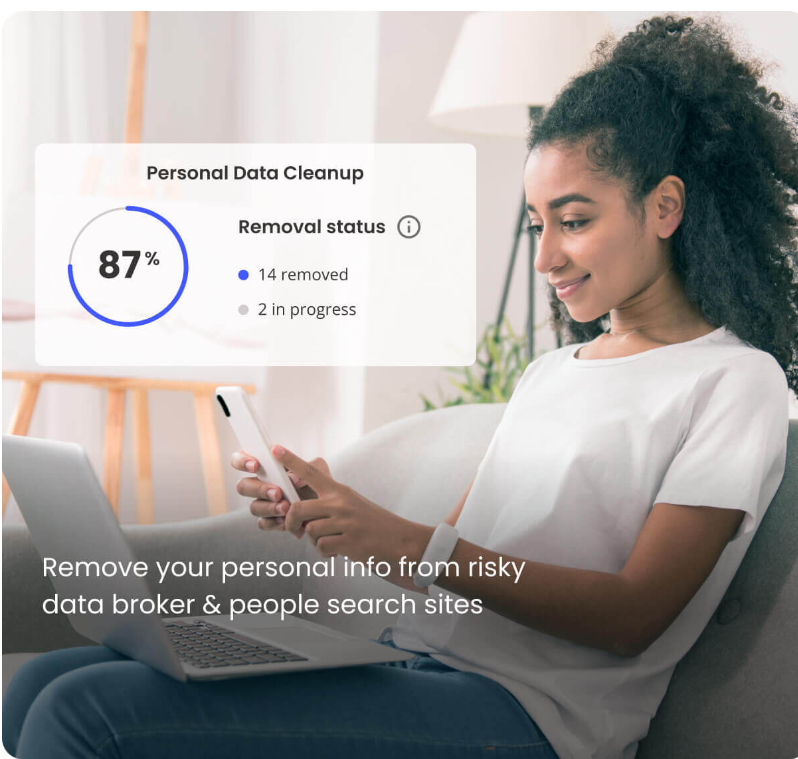

You can see the entire range of features that cover your identity, privacy, and security with a visit to our McAfee+ page.
McAfee+ Ultimate offers our most thorough protection, with which you can lock your credit with a click or put a comprehensive security freeze in place, both to thwart potential identity theft. You can keep tabs on your credit with daily credit monitoring and get an alert when there’s credit activity to spot any irregularities quickly.
You’ll also feel like someone has your back. Even with the most thorough measures in place, identity theft and ransomware attacks can still strike, which can throw your personal and financial life into a tailspin. What do you do? Where do you start? Here, we have you covered. We offer two kinds of coverage that can help you recover your time, money, and good name:
Starting today, customers in the U.S. can purchase McAfee+ online at McAfee.com in Premium, Advanced, and Ultimate plans, in addition to individual and family subscriptions. McAfee+ will also be available online in the U.K., Canada, and Australia in the coming weeks with additional regions coming in the months ahead (features may vary by region).
We are very excited about bringing these new protections to you and we hope you will be too.
The post The Feeling of Safety with McAfee+ appeared first on McAfee Blog.
The hybrid work environment has been around for years, albeit not common but it existed. I can recall my first job where I was able to split my time working in an office and working from my makeshift home office. This was many moons ago as I will call it… pre-COVID-19.
Job seekers are certainly looking to have the flexibility of working from anywhere at any time – preferably in an environment of their choosing. Even though a hybrid workforce will provide people with the option to work from anywhere, those remote locations are sometimes in unsecured locations. Organizations must now reimagine a workforce that will need access to your internal collaboration tools along with access to your network from both on- and off-premises.
Cisco, a leader in equipping organizations with the right products for a hybrid workforce, provides the tools & services to protect your organization from bad threat actors.
With pervasive ransomware attacks, malware attacks, and email attacks, you must be ready and have not only a security solution but also a security analyst team ready to respond when an attack happens.
Securing access to your endpoint must be a top priority and your security analysts must be agile and have the right telemetry to provide around-the-clock monitoring and the ability to quickly respond to threats.
Cisco Secure Endpoint provides you with the visibility and ability to respond to threats by blocking them before they compromise your network. Combined with global, proactive threat hunting, leading-edge forensic/analytic capabilities, and reduced leading Mean Time To Detection (MTTD)/Mean Time To Resolution (MTTR) across the supply chain that no other vendor can parallel; why would you partner with any other company to secure and scale your unique hybrid workforce or workplace clients?
Click here to listen to my fireside chat on how we at Cisco would define 5 Best Practices Security Analysts Can Use to Secure Their Hybrid Workforce:
I am joined by Cisco Talos global Senior Threat Defense and Response Analyst, William (Bill) Largent who has over 20 plus years of infosec experience, specifically in network intrusion detection, traffic analysis, and signature/rule writing.
I will also be speaking with Eric Howard, Cisco Secure Technical Marketing Engineer Leader for the Security Platform and Response Group. Eric is a seasoned team leader in both Information Security Sales, and Product Management. He has built and led teams that apply deep technical understanding to business needs, initiatives, and strategies in both start-ups and established companies.
This is a conversation you do not want to skip! There were a lot of gems shared by these gentlemen that will get you where you need to be as a Security Analyst.
We’d love to hear what you think. Ask a Question, Comment Below, and Stay Connected with Cisco Secure on social!
Cisco Secure Social Channels
It pays to do some research before taking a leap into the world of internet-connected toys
The post Toys behaving badly: How parents can protect their family from IoT threats appeared first on WeLiveSecurity
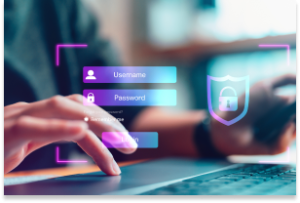
Password protection is one of the most common security protocols available. By creating a unique password, you are both proving your identity and keeping your personal information safer. However, when every account you have requires a separate password, it can be an overwhelming task. While you should be concerned about the safety of your data, you also want to avoid the frustration of forgetting your password and being blocked from the information you need. However, the benefits of using strong, unique passwords outweigh the occasional inconvenience.
The main benefit of a strong password is security. Hackers work quickly when they are trying to access accounts. They want to steal as much information as they can in as short a time as possible. This makes an account with a strong password less inviting because cracking the code is much more involved.
A strong password also limits the damage that hackers can do to your personal accounts. A common strategy involves cracking the passwords of less secure sites with limited personal information. The hackers hope that they can use the password from your gym membership app to access information in your online banking account. Strong password protection prevents this situation.
When someone is registering an online account, it can be tempting to blaze through the password process. In order to move quickly, there are several poor password practices that people employ.
A password is considered strong when it is difficult for a hacker to crack it quickly. Sophisticated algorithms can run through many password combinations in a short time. A password that is long, complex and unique will discourage attempts to break into your accounts.
If you want a password that is memorable but strong, you can easily turn a phrase into a layered, complex password. In this process, it is important to note that you should not use personal information that is available online as part of your phrase.
Now, you have a password that you can remember while challenging the algorithms hackers use.
When you consider the number of accounts you need to protect, coming up with a properly layered password is a time-consuming task. Even if you are able to decide on a memorable phrase, there are just too many accounts that need passwords. A password manager is a helpful tool to keep you safe while you are online. It acts as a database for all of your passwords. Each time you create a new code, it stores it so that you can automatically enter it later. You only need to remember a single password to access the tools of your manager.
Most managers can also do the work of creating complex, layered passwords for your accounts. These will be a string of random numbers, letters and characters. They will not be memorable, but you are relying on the manager to do the memorizing. These machine-generated passwords are especially helpful for accounts you rarely access or that do not hold significant information.
For critical accounts like your bank account or a work-related account, it can be helpful to keep an offline list of your passwords. Complex passwords are meant to be difficult to remember. You may recall the phrase but not all the detailed changes that make it layered. Keeping a document on a zip drive or even in a physical paper file or journal will allow you to access your information if your hardware fails or you are switching to a new system.
Cracking passwords is just one of the strategies hackers use to steal information. In addition to using strong passwords, it is important to employ comprehensive security software. Strong passwords will help protect your online accounts. Strong overall security will keep your hardware and network safe from danger.
The post Strong Password Ideas to Keep Your Information Safe appeared first on McAfee Blog.
The release of Microsoft Azure Gateway Load Balancer is great news for customers, empowering them to simply and easily add Cisco Secure Firewall capabilities to their Azure cloud infrastructure. By combining Azure Gateway Load Balancer with Cisco Secure Firewall, organizations can quickly scale their firewall presence across their Azure cloud environment, providing protection for infrastructure and applications exactly where and when they need it.
With applications and resources hyper-distributed across hybrid-multicloud environments, organizations require agile security to protect their environment at each control point. This integration empowers organizations to dynamically insert Cisco’s security controls and threat defense capabilities in their Azure environment, removing the clunkiness of provisioning and deploying firewalls, as well as the need to rearchitect the network. Organizations can now enjoy highly available threat defense on the fly, protecting their infrastructure and applications from known and unknown threats.
Combining Secure Firewall with Azure Gateway Load Balancer offers a significant reduction in operational complexity when securing cloud infrastructure. Azure Gateway Load Balancer provides bump-in-the-wire functionality ensuring Internet traffic to and from an Azure VM, such as an application server, is inspected by Secure Firewall without requiring any routing changes. It also offers a single entry and exit point at the firewall and allows organizations to maintain visibility of the source IP address. Complementing these features, organizations can take advantage of our new Cloud-delivered Firewall Management Center. It enables organizations to manage their firewall presence 100% through the cloud with the same look and feel as they’ve grown accustomed to with Firewall Management Center. With Cloud-delivered Firewall Management Center, organizations will achieve faster time-to-value with simplified firewall deployment and management.




Azure Gateway Load Balancer support for Cisco Secure Firewall Threat Defense Virtual is available now. To learn more about how Cisco Secure Firewall drives security resilience across your hybrid-multicloud environment, see the additional resources below and reach out to your Cisco sales representative.
Microsoft Blog: Gateway Load Balancer now generally available in all regions
Azure Marketplace listing: Cisco Secure Firewall Threat Defense Virtual
Cisco Secure Firewall At-a-Glance
Cisco Secure Firewall for Public Cloud
Cloud-delivered Firewall Management Center
We’d love to hear what you think. Ask a Question, Comment Below, and Stay Connected with Cisco Secure on social!
Cisco Secure Social Channels

It’s too bad cybercriminals don’t funnel their creativity into productive pursuits because they’re constantly coming up with nefarious new ways to eke out money and information from unsuspecting people. One of their newest schemes is called synthetic identity theft, a type of identity theft that can happen to anyone. Luckily, there are ways to lower the chance of it happening to you. And if it does happen to you, there are a few preventive measures you can take. Plus when you’re able to identify the early signs, you can minimize its damage to your finances and your credit.
Here’s everything you need to know about synthetic identity theft in order to keep your and your family’s information safe.
Synthetic identity theft occurs when a cybercriminal steals a real Social Security Number (SSN) but fabricates the rest of the details that are associated with that SSN, such as the full name and birthdate. With this valid SSN, they’re able to create an entirely new identity and use it to take out loans, apply for credit cards, or even purchase a house.
This form of identity theft is more difficult than traditional identity theft to detect. When a criminal steals someone’s entire identity – their name, birthdate, address, and SSN – there are more flags that could raise the alarm that something is amiss. Additionally, in some cases of synthetic identity theft, cybercriminals play the long game, meaning that they build up excellent credit with their new fake identity for months or even years. Then, once they’ve squeezed as much as they can from that great credit, they rack up huge charges against that credit and flee. It is only then when creditors demand payment that the rightful owner of the SSN finds out their identity was compromised.
Synthetic identity theft can severely damage the credit or finances of the person to whom the SSN truly belongs. It most often occurs to people who don’t closely monitor their credit, such as children, people in jail, or the elderly, but it can happen to anyone.
The signs of synthetic identity theft are a bit different than the signs of regular identity theft. In traditional identity theft, you may receive bills to your address either with someone else’s name on them or for organizations with which you don’t have an account. However, in the case of synthetic identity theft, since the thief makes up an entirely new name and address, you’re unlikely to accidentally get their mail.
The major red flag is if your credit score is drastically lower (or higher) than you remember it being. Did you know that you can request one free credit report per year from each major credit bureau? Get in the habit of ordering reports regularly to keep tabs on your credit and confirm that there are no new accounts that you didn’t create.
Check out these tips on how to protect your identity online to hopefully prevent it from ever happening to you:
McAfee Identity Protection is a comprehensive identity monitoring service that protects your identity and privacy from the fastest-growing financial crimes in America. McAfee can scan risky websites to see if your information was leaked in a recent breach. Additionally, with the new security freeze feature, you can deny access to your credit report, which stops fraudsters from opening new credit cards or bank or utility accounts in your name. Finally, if the worst does happen, McAfee Identity Protection offers up to $1 million in identity theft coverage and restoration.
If you don’t do so already, commit to a routine of monitoring your credit and financial accounts. It only takes a few minutes every month. To fill in the gaps, trust McAfee!
The post What Is Synthetic Identity Theft? appeared first on McAfee Blog.

Welcome back to part 2 of my Metaverse series. If you are after tips and strategies to help your kids navigate the Metaverse safely then you’re in the right place. In this post I’ll share with you how your kids are likely already accessing the Metaverse, the benefits plus how to ensure they have a safe and positive experience. Now, if you’d like a refresher on exactly what the Metaverse is before we get underway, then check out part one here.
If your kids have played Roblox, Fortnite or Minecraft then they have already taken the step into this new virtual frontier. Yes, it’s that easy! But how many kids are playing on these platforms?
So, if you’ve got a couple of kids, tweens or teens in your house, then chances are they have probably already had a Metaverse experience! Or, if not yet, then it won’t be long…
There are actually a lot of similarities between online video games and the Metaverse including the use of avatars and the availability of items to purchase eg a horse in a game or an NFT (non-fungible token) in the Metaverse. However, the biggest difference is that the Metaverse is not just about gaming – it is so much more. In the Metaverse, there are no limitations to the number of participants nor on the type of activity – you can attend meetings, concerts, socialise without the gaming aspect, even undertake study!
There are so many good things about the Metaverse for our kids, particularly from an educational perspective. As a mum of 4, I am really excited at the possibilities the Metaverse will offer our kids. Imagine being able to experience a country in virtual reality – walk around, see the sights, its geographical features. I have no doubt that would enthuse even the most reluctant learners. And a recent US study confirmed this. It found that taking students on a Virtual Reality field trip to Greenland to learn about climate change resulted in higher interest, enjoyment and retention than students who simply watched a traditional 2-D video. How good!
Taking care of my family’s mental health has always been a huge focus of my parenting approach and I am really excited at the great options the Metaverse can offer in the area. As a family, we’ve spent multiple hours using apps like Calm and Headspace to help us meditate and practice mindfulness. But the thought of being able to don a VR headset and be transported to the actual rainforest or the roaring fire that I often listen to, is even more appealing! One of the best parts of the VR experience is that it completely blocks out the ‘real world’ which would make it easier to stay in the flow. Very appealing!
And while we’re talking benefits, let’s not gloss over the potential role the Metaverse can play in fostering empathy and promoting understanding between communities. There is a growing group of digital creators who are designing Metaverse experiences to do this using Virtual Reality. Homeless Realities is a project from the University of Southern California (USC) where students use virtual reality to tell stories, usually of marginalized communities that have been overlooked by traditional journalism. So powerful!
As parents, it’s essential that we add the Metaverse to our list of things to get our head around so we can keep our kids safe. Here are my top tips:
While I very much appreciate you reading this post, it’s important that you take action and get involved – particularly if your kids are already. If your kids are using Minecraft, Fortnite or Roblox – sign up and understand yourself how it all works. If your kids have a VR headset and you’re not sure how it works – ask them for a turn and a lesson. Only by experiencing it for yourself, will you truly understand the attraction but also the pitfalls and risks.
As the Metaverse is still evolving and very much a work in progress, there are very minimal protections in place for users. However, the 3 platforms that tend to attract younger players (Roblox, Minecraft and Fortnite) all have parental control features. So, please direct them here – if you can – as you’ll be able to have more control over their online safety.
Minecraft and Fortnite allow parents to disable chat functions which means your kids can’t communicate with people they don’t know. Roblox will automatically apply certain safety settings depending on the age group of their account. But regardless of what their platform of choice is, always protect your credit card details!! I know Fortnite will only allow kids to make ‘in game’ purchases if these supply credit card details in the checkout.
If your kids are older, it’s likely, you’ll have far less say over where they spend their time in the Metaverse so that’s when your kids will need to rely on their cyber safety skills to help them make safe decisions. Now, don’t assume that your child’s school has ticked the cyber safety box and it’s all been taken care of. Cybersafety needs to be weaved into your family’s dialogue and spoken about regularly. Even from the age of 5, your kids should know that they shouldn’t talk to strangers online or offline, if they see something that makes them upset online then they need to talk to a parent asap and, that they should never share their name or anything that could identify them online.
The goal of this is to make safe online behaviour part of their routine so that when they are faced with a challenging situation anywhere online, they automatically know how to respond. And of course, as kids get older, the advice becomes appropriate to their age.
Most kids are busting to get access to a VR headset but please take some time to do your research to work out which headsets are more suitable for your kids and your lounge room! There are 2 basic types: some that require a ‘tethered’ connection to a PC or standalone models with built-in computing power. The tethered headsets have traditionally delivered a more immersive user experience due to the extra computational power the PC provides however experts predict it won’t be long before standalone headsets are just as good. The biggest selling VR headset, Occulus Quest 2, can in fact connect wirelessly to your PC with the option to connect via a cable in case the game or experience needs extra oomph!
Regardless of which type you choose, it’s important that there is a safe play area in which to use the headset. VR headsets completely removes any visual of the real world so please remove special vases and keepsakes and ensure the dog isn’t roaming around.
‘Cybersickness’ aka motion sickness can be a real issue for some VR users. When you don the headset and are immersed in a different time and space, your body can get very confused. If your brain thinks you are moving (based on what you are seeing through the headset) but in fact you’re standing still, it creates a disconnect that causes enough confusion to make you feel nauseous. If this happens to your kids, consider reducing the time they spend with the headset, having fewer but smaller sessions to get your ‘VR legs’ and checking the VR headset is being worn correctly.
So, it’s over to you now parents: it’s time to get involved and understand this Metaverse once and for all. Always start with the games and experiences your kids spend their time on but when you’re ready, make sure you check out some of the more adult places such as Decentraland or The Sandbox. Who knows, you might just become a virtual real estate tycoon or set up a business that becomes quite the side hustle! The sky is the limit in the Metaverse!
Till next time!
Alex
The post A Parent’s Guide To The Metaverse – Part Two appeared first on McAfee Blog.

“But everyone else has one.”
Those are familiar words to a parent, especially if you’re having the first smartphone conversation with your tween or pre-teen. In their mind, everyone else has a smartphone so they want a one too. But does “everyone” really have one? Well, your child isn’t wrong.
Our recent global study found that 76% of children aged 10 to 14 reported using a smartphone or mobile device, with Brazil leading the way at 95% and the U.S. trailing the global average at 65%.
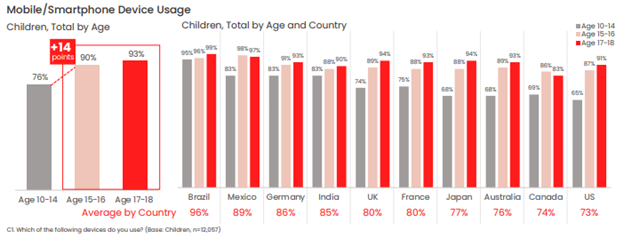
Our figures show that younger children with smartphones and mobile devices make up a decisive majority of younger children overall.
Of course, just because everyone else has smartphone doesn’t mean that it’s necessarily right for your child and your family. After all, with a smartphone comes access to a wide and practically unfettered world of access to the internet, apps, social media, instant messaging, texting, and gaming, all within nearly constant reach. Put plainly, some tweens and pre-teens simply aren’t ready for that just yet, whether in terms of their maturity, habits, or ability to care for and use a device like that responsibly.
Yet from a parent’s standpoint, a first smartphone holds some major upsides. One of the top reasons parents give a child a smartphone is “to stay in touch,” and that’s understandable. There’s something reassuring knowing that your child is a call or text away—and that you can keep tabs on their whereabouts with GPS tracking. Likewise, it’s good to know that they can reach you easily too. Arguably, that may be a reason why some parents end up giving their children a smartphone a little sooner than they otherwise would.
However, you don’t need a smartphone to do to text, track, and talk with your child. You have alternatives.
One way to think about the first smartphone is that it’s something you ease into. In other words, if the internet is a pool, your child should learn to navigate the shallows with some simpler devices before diving into the deep end with a smartphone.
Introducing technology and internet usage in steps can build familiarity and confidence for them while giving you control. You can oversee their development, while establishing rules and expectations along the way. Then, when the time is right, they can indeed get their first smartphone.
But how to go about that?
It seems a lot of parents have had the same idea and device manufacturers have listened. They’ve come up with smartphone alternatives that give kids the chance to wade into the mobile internet, allowing them to get comfortable with device ownership and safety over time without making the direct leap to a fully featured smartphone. Let’s look at some of those options, along with a few other long-standing alternatives.
These small and ruggedly designed devices can clip to a belt loop, backpack, or simply fit in a pocket, giving you the ability to see your child’s location. In all, it’s quite like the “find my” functionality we have on our smartphones. When it comes to GPS trackers for kids, you’ll find a range of options and form factors, along with different features such as an S.O.S. button, “geofencing” that can send you an alert when your child enters or leaves a specific area (like home or school), and how often it sends an updated location (to regulate battery life).
Whichever GPS tracker you select, make sure it’s designed specifically for children. So-called “smart tags” designed to locate things like missing keys and wallets are just that—trackers designed to locate things, not children.
With GPS tracking and many other communication-friendly features for families, smart watches can give parents the reassurance they’re looking for while giving kids a cool piece of tech that they can enjoy. The field of options is wide, to say the least. Smart watches for kids can range anywhere from devices offered by mobile carriers like Verizon, T-Mobile, and Vodaphone to others from Apple, Explora, and Tick Talk. Because of that, you’ll want to do a bit of research to determine the right choice for you and your child.
Typical features include restricted texting and calling, and you’ll find that some devices are more durable and more water resistant than others, while yet others have cameras and simple games. Along those lines, you can select a smart watch that has a setting for “school time” so that it doesn’t become a distraction in class. Also, you’ll want to look closely at battery life, as some appear to do a better job of holding a charge than others.
Another relatively recent entry on the scene are smartphones designed specifically for children, which offer a great step toward full-blown smartphone ownership. These devices look, feel, and act like a smartphone, but without web browsing, app stores, and social media. Again, features will vary, yet there are ways kids can store and play music, stream it via Bluetooth to headphones or a speaker, and install apps that you approve of.
Some are paired with a parental control app that allows you to introduce more and more features over time as your child as you see fit—and that can screen texts from non-approved contacts before they reach your child. Again, a purchase like this one calls for some research, yet names like Gabb wireless and the Pinwheel phone offer a starting point.
The old reliable. Rugged and compact, and typically with a healthy battery life to boot, flip phones do what you need them to—help you and your child keep in touch. They’re still an option, even if your child may balk at the idea of a phone that’s “not as cool as a smartphone.” However, if we’re talking about introducing mobile devices and the mobile internet to our children in steps, the flip phone remains in the mix.
Some are just phones and nothing else, while other models can offer more functionality like cameras and slide-out keyboards for texting. And in keeping with the theme here, you’ll want to consider your options so you can pick the phone that has the features you want (and don’t want) for your child.
Despite what your younger tween or pre-teen might think, there’s no rush to get that first smartphone. And you know it too. You have time. Time to take eventual smartphone ownership in steps, with a device that keeps you in touch and that still works great for your child.
By easing into that first smartphone, you’ll find opportunities where you can monitor and guide their internet usage. You’ll also find plenty of moments to help your child start forming healthy habits around device ownership and care, etiquette, and safety online. In all, this approach can help you build a body of experience that will come in handy when that big day finally comes—first smartphone day.
The post Smartphone Alternatives: Ease Your Way into Your Child’s First Phone appeared first on McAfee Blog.

Fears and phobias. We all have them. But what are your biggest ones? I absolutely detest snakes but spiders don’t worry me at all. Well, new research by McAfee shows that cybercriminals and the fear of being hacked are now the 5th greatest fear among Aussies.
With news of data breaches and hacking crusades filling our news feed on a regular basis, many of us are becoming more aware and concerned about the threats we face in our increasingly digital world. And McAfee’s latest confirms this with hackers making their way into Australia’s Top 10 Fears.
According to research conducted by McAfee, snakes are the top phobia for Aussies followed by spiders, heights and sharks. Cybercriminals and the fear of being hacked come in in 5th place beating the dentist, bees, ghosts, aeroplane travel and clowns!
Aussie Top 10 Fears and Phobias
Fears and phobias develop when we perceive that we are at risk of pain, or worse, still, death. And while almost a third of respondents nominated snakes as their number one fear, there is less than one-in-fifty thousand chance of being bitten badly enough by a snake to warrant going to hospital in Australia, according to research from the Internal Medicine Journal.
In contrast, McAfee’s analysis of more than 108 billion potential online threats between October and December, identified 202 million of these threats as genuine risks. With a global population of 7.5 billion, that means there is approximately a one in 37 chance of being targeted by cybercrime. Now while this is not a life-threatening situation, these statistics show that chance of us being affected by an online threat is very real.
According to the research, 82% of Aussies believe that being hacked is a growing or high concern. And when you look at the sheer number of reported data breaches so far this year, these statistics make complete sense. Data breaches have affected Bunnings staff, Federal Parliament staff, Marriott guests, Victorian Government staff, QLD Fisheries members, Skoolbag app users and Big W customers plus many more.
Almost 1 in 5 (19%) of those interviewed said their top fear at work is doing something that will result in a data security breach, they will leak sensitive information or infect their corporate IT systems.
The fear that we are in the midst of a cyberwar is another big concern for many Aussies. Cyberwar can be explained as a computer or network-based conflict where parties try to disrupt or take ownership of the activities of other parties, often for strategic, military or cyberespionage purposes. 55% of Aussies believe that a cyberwar is happening right now but we just don’t know about it. And a fifth believe cyber warfare is the biggest threat to our nation.
Being proactive about protecting your online life is the absolute best way of reducing the chances of being hacked or being affected by a data breach. Here are my top tips on what you can now to protect yourself:
Using a password manager to create unique and complex passwords for each of your online accounts will definitely improve your online safety. If each on your online accounts has a unique password and you are involved in a breach, the hacker won’t be able to use the stolen password details to log into any of your other accounts.
Storing your financial data within your browser and being able to populate online forms quickly within seconds makes the autofill function very attractive however it is risky. Autofill will automatically fill out all forms on a page regardless of whether you can see all the boxes. You may just think you are automatically entering your email address into an online form however a savvy hacker could easily design an online form with hidden boxes designed to capture your financial information. So remove all your financial information from Autofill. I know this means you will have to manually enter information each time you purchase but your personal data will be better protected.
One of the easiest ways for a cybercriminal to compromise their victim is by using phishing emails to lure consumers into clicking links for products or services that could lead to malware, or a phoney website designed to steal personal information. If the deal seems too good to be true, or the email was not expected, always check directly with the source.
It’s important to put the right security solutions in place in order to surf the web safely. Add an extra layer of security to your browser with McAfee WebAdvisor.
I know public Wi-Fi might seem like a good idea, but if consumers are not careful, they could be unknowingly exposing personal information or credit card details to cybercriminals who are snooping on the network. If you are a regular Wi-Fi user, I recommend investing in a virtual private network or (VPN) such as McAfee Secure VPN which will ensure your connection is completely secure and that your data remains safe.
While it is tempting, putting our head in the sand and pretending hackers and cybercrime don’t exist puts ourselves and our families at even more risk! Facing our fears and making an action plan is the best way of reducing our worry and stress. So, please commit to being proactive about your family’s online security. Draw up a list of what you can do today to protect your tribe. And if you want to receive regular updates about additional ways you can keep your family safe online, check out my blog.
‘till next time.
Alex x
The post Aussies Fear Snakes, Spiders and Getting Hacked appeared first on McAfee Blog.
Earlier this month, the administrator of the cybercrime forum Breached received a cease-and-desist letter from a cybersecurity firm. The missive alleged that an auction on the site for data stolen from 10 million customers of Mexico’s second-largest bank was fake news and harming the bank’s reputation. The administrator responded to this empty threat by purchasing the stolen banking data and leaking it on the forum for everyone to download.
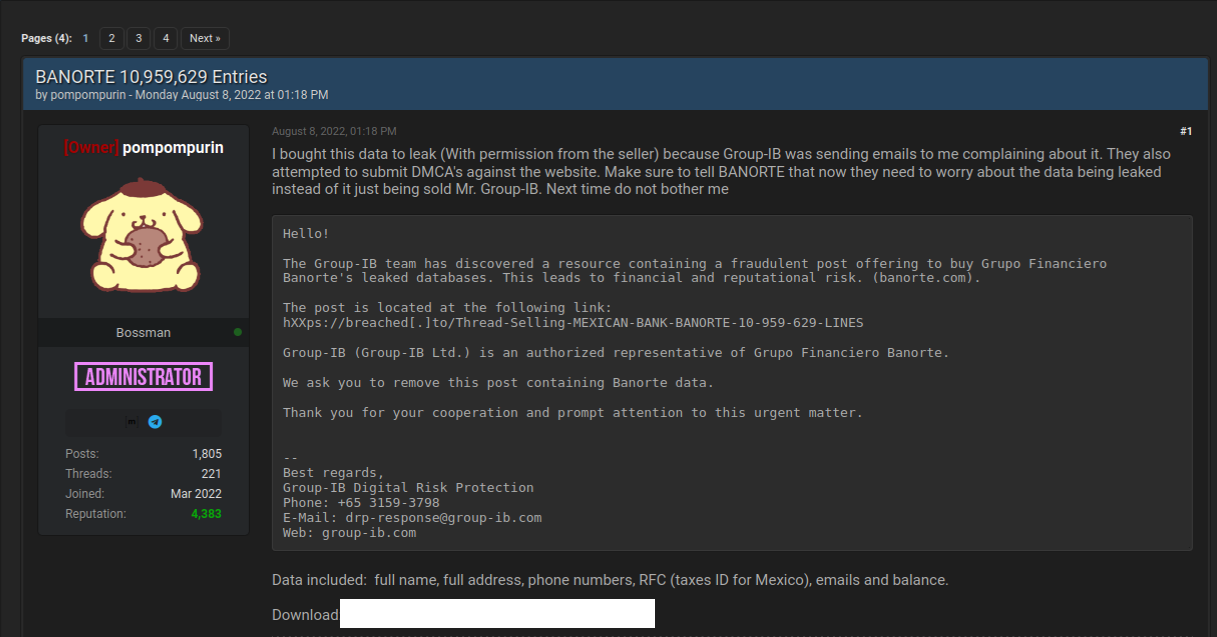
On August 3, 2022, someone using the alias “Holistic-K1ller” posted on Breached a thread selling data allegedly stolen from Grupo Financiero Banorte, Mexico’s second-biggest financial institution by total loans. Holistic-K1ller said the database included the full names, addresses, phone numbers, Mexican tax IDs (RFC), email addresses and balances on more than 10 million citizens.
There was no reason to believe Holistic-K1ller had fabricated their breach claim. This identity has been highly active on Breached and its predecessor RaidForums for more than two years, mostly selling databases from hacked Mexican entities. Last month, they sold customer information on 36 million customers of the Mexican phone company Telcel; in March, they sold 33,000 images of Mexican IDs — with the front picture and a selfie of each citizen. That same month, they also sold data on 1.4 million customers of Mexican lending platform Yotepresto.
But this history was either overlooked or ignored by Group-IB, the Singapore-based cybersecurity firm apparently hired by Banorte to help respond to the data breach.
“The Group-IB team has discovered a resource containing a fraudulent post offering to buy Grupo Financiero Banorte’s leaked databases,” reads a letter the Breach administrator said they received from Group-IB. “We ask you to remove this post containing Banorte data. Thank you for your cooperation and prompt attention to this urgent matter.”
The administrator of Breached is “Pompompurin,” the same individual who alerted this author in November 2021 to a glaring security hole in a U.S. Justice Department website that was used to spoof security alerts from the FBI. In a post to Breached on Aug. 8, Pompompurin said they bought the Banorte database from Holistic-K1ller’s sales thread because Group-IB was sending emails complaining about it.
“They also attempted to submit DMCA’s against the website,” Pompompurin wrote, referring to legal takedown requests under the Digital Millennium Copyright Act. “Make sure to tell Banorte that now they need to worry about the data being leaked instead of just being sold.”
Group-IB CEO Dmitriy Volkov said the company has seen some success in the past asking hackers to remove or take down certain information, but that making such requests is not a typical response for the security firm.
“It is not a common practice to send takedown notifications to such forums demanding that such content be removed,” Volkov said. “But these abuse letters are legally binding, which helps build a foundation for further steps taken by law enforcement agencies. Actions contrary to international rules in the regulated space of the Internet only lead to more severe crimes, which — as we know from the case of Raidforums — are successfully investigated and stopped by law enforcement.”
Banorte did not respond to requests for comment. But in a brief written statement picked up on Twitter, Banorte said there was no breach involving their infrastructure, and the data being sold is old.
“There has been no violation of our platforms and technological infrastructure,” Banorte said. “The set of information referred to is inaccurate and outdated, and does not put our users and customers at risk.”
That statement may be 100 percent true. Still, it is difficult to think of a better example of how not to do breach response. Banorte shrugging off this incident as a nothingburger is baffling: While it is almost certainly true that the bank balance information in the Banorte leak is now out of date, the rest of the information (tax IDs, phone numbers, email addresses) is harder to change.
“Is there one person from our community that think sending cease and desist letter to a hackers forum operator is a good idea?,” asked Ohad Zaidenberg, founder of CTI League, a volunteer emergency response community that emerged in 2020 to help fight COVID-19 related scams. “Who does it? Instead of helping, they pushed the organization from the hill.”
Kurt Seifried, director of IT for the CloudSecurityAlliance, was similarly perplexed by the response to the Banorte breach.
“If the data wasn’t real….did the bank think a cease and desist would result in the listing being removed?” Seifried wondered on Twitter. “I mean, isn’t selling breach data a worse crime usually than slander or libel? What was their thought process?”
A more typical response when a large bank suspects a breach is to approach the seller privately through an intermediary to ascertain if the information is valid and what it might cost to take it off the market. While it may seem odd to expect cybercriminals to make good on their claims to sell stolen data to only one party, removing sold stolen items from inventory is a fairly basic function of virtually all cybercriminal markets today (apart from perhaps sites that traffic in stolen identity data).
At a minimum, negotiating or simply engaging with a data seller can buy the victim organization additional time and clues with which to investigate the claim and ideally notify affected parties of a breach before the stolen data winds up online.
It is true that a large number of hacked databases put up for sale on the cybercrime underground are sold only after a small subset of in-the-know thieves have harvested all of the low-hanging fruit in the data — e.g., access to cryptocurrency accounts or user credentials that are recycled across multiple websites. And it’s certainly not unheard of for cybercriminals to go back on their word and re-sell or leak information that they have sold previously.
But companies in the throes of responding to a data security incident do themselves and customers no favors when they underestimate their adversaries, or try to intimidate cybercrooks with legal threats. Such responses generally accomplish nothing, except unnecessarily upping the stakes for everyone involved while displaying a dangerous naiveté about how the cybercrime underground works.
Update, Aug. 17, 10:32 a.m.: Thanks to a typo by this author, a request for comment sent to Group-IB was not delivered in advance of this story. The copy above has been updated to include a comment from Group-IB’s CEO.
The Department of Homeland Security (DHS) is urging states and localities to beef up security around proprietary devices that connect to the Emergency Alert System — a national public warning system used to deliver important emergency information, such as severe weather and AMBER alerts. The DHS warning came in advance of a workshop to be held this weekend at the DEFCON security conference in Las Vegas, where a security researcher is slated to demonstrate multiple weaknesses in the nationwide alert system.
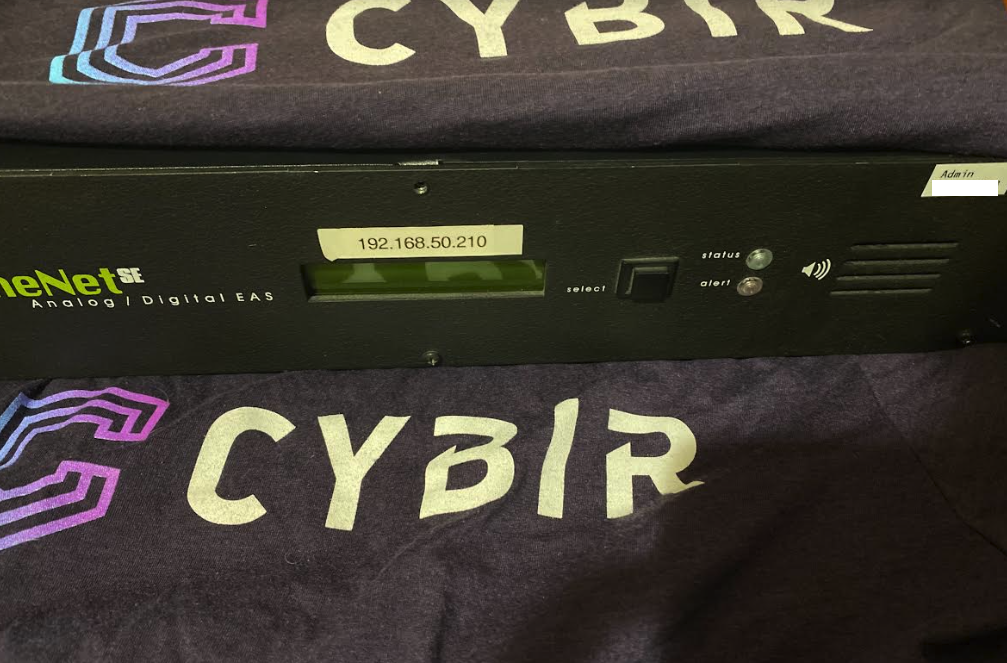
A Digital Alert Systems EAS encoder/decoder that Pyle said he acquired off eBay in 2019. It had the username and password for the system printed on the machine.
The DHS warning was prompted by security researcher Ken Pyle, a partner at security firm Cybir. Pyle said he started acquiring old EAS equipment off of eBay in 2019, and that he quickly identified a number of serious security vulnerabilities in a device that is broadly used by states and localities to encode and decode EAS alert signals.
“I found all kinds of problems back then, and reported it to the DHS, FBI and the manufacturer,” Pyle said in an interview with KrebsOnSecurity. “But nothing ever happened. I decided I wasn’t going to tell anyone about it yet because I wanted to give people time to fix it.”
Pyle said he took up the research again in earnest after an angry mob stormed the U.S. Capitol on Jan. 6, 2021.
“I was sitting there thinking, ‘Holy shit, someone could start a civil war with this thing,”’ Pyle recalled. “I went back to see if this was still a problem, and it turns out it’s still a very big problem. So I decided that unless someone actually makes this public and talks about it, clearly nothing is going to be done about it.”
The EAS encoder/decoder devices Pyle acquired were made by Lyndonville, NY-based Digital Alert Systems (formerly Monroe Electronics, Inc.), which issued a security advisory this month saying it released patches in 2019 to fix the flaws reported by Pyle, but that some customers are still running outdated versions of the device’s firmware. That may be because the patches were included in version 4 of the firmware for the EAS devices, and many older models apparently do not support the new software.
“The vulnerabilities identified present a potentially serious risk, and we believe both were addressed in software updates issued beginning Oct 2019,” EAS said in a written statement. “We also provided attribution for the researcher’s responsible disclosure, allowing us to rectify the matters before making any public statements. We are aware that some users have not taken corrective actions and updated their software and should immediately take action to update the latest software version to ensure they are not at risk. Anything lower than version 4.1 should be updated immediately. On July 20, 2022, the researcher referred to other potential issues, and we trust the researcher will provide more detail. We will evaluate and work to issue any necessary mitigations as quickly as possible.”
But Pyle said a great many EAS stakeholders are still ignoring basic advice from the manufacturer, such as changing default passwords and placing the devices behind a firewall, not directly exposing them to the Internet, and restricting access only to trusted hosts and networks.

Pyle, in a selfie that is heavily redacted because the EAS device behind him had its user credentials printed on the lid.
Pyle said the biggest threat to the security of the EAS is that an attacker would only need to compromise a single EAS station to send out alerts locally that can be picked up by other EAS systems and retransmitted across the nation.
“The process for alerts is automated in most cases, hence, obtaining access to a device will allow you to pivot around,” he said. “There’s no centralized control of the EAS because these devices are designed such that someone locally can issue an alert, but there’s no central control over whether I am the one person who can send or whatever. If you are a local operator, you can send out nationwide alerts. That’s how easy it is to do this.”
One of the Digital Alert Systems devices Pyle sourced from an electronics recycler earlier this year was non-functioning, but whoever discarded it neglected to wipe the hard drive embedded in the machine. Pyle soon discovered the device contained the private cryptographic keys and other credentials needed to send alerts through Comcast, the nation’s third-largest cable company.
“I can issue and create my own alert here, which has all the valid checks or whatever for being a real alert station,” Pyle said in an interview earlier this month. “I can create a message that will start propagating through the EAS.”
Comcast told KrebsOnSecurity that “a third-party device used to deliver EAS alerts was lost in transit by a trusted shipping provider between two Comcast locations and subsequently obtained by a cybersecurity researcher.
“We’ve conducted a thorough investigation of this matter and have determined that no customer data, and no sensitive Comcast data, were compromised,” Comcast spokesperson David McGuire said.
The company said it also confirmed that the information included on the device can no longer be used to send false messages to Comcast customers or used to compromise devices within Comcast’s network, including EAS devices.
“We are taking steps to further ensure secure transfer of such devices going forward,” McGuire said. “Separately, we have conducted a thorough audit of all EAS devices on our network and confirmed that they are updated with currently available patches and are therefore not vulnerable to recently reported security issues. We’re grateful for the responsible disclosure and to the security research community for continuing to engage and share information with our teams to make our products and technologies ever more secure. Mr. Pyle informed us promptly of his research and worked with us as we took steps to validate his findings and ensure the security of our systems.”

The user interface for an EAS device.
Unauthorized EAS broadcast alerts have happened enough that there is a chronicle of EAS compromises over at fandom.com. Thankfully, most of these incidents have involved fairly obvious hoaxes.
According to the EAS wiki, in February 2013, hackers broke into the EAS networks in Great Falls, Mt. and Marquette, Mich. to broadcast an alert that zombies had risen from their graves in several counties. In Feb. 2017, an EAS station in Indiana also was hacked, with the intruders playing the same “zombies and dead bodies” audio from the 2013 incidents.
“On February 20 and February 21, 2020, Wave Broadband’s EASyCAP equipment was hacked due to the equipment’s default password not being changed,” the Wiki states. “Four alerts were broadcasted, two of which consisted of a Radiological Hazard Warning and a Required Monthly Test playing parts of the Hip Hop song Hot by artist Young Thug.”
In January 2018, Hawaii sent out an alert to cell phones, televisions and radios, warning everyone in the state that a missile was headed their way. It took 38 minutes for Hawaii to let people know the alert was a misfire, and that a draft alert was inadvertently sent. The news video clip below about the 2018 event in Hawaii does a good job of walking through how the EAS works.
Microsoft today released updates to fix a record 141 security vulnerabilities in its Windows operating systems and related software. Once again, Microsoft is patching a zero-day vulnerability in the Microsoft Support Diagnostics Tool (MSDT), a service built into Windows. Redmond also addressed multiple flaws in Exchange Server — including one that was disclosed publicly prior to today — and it is urging organizations that use Exchange for email to update as soon as possible and to enable additional protections.

In June, Microsoft patched a vulnerability in MSDT dubbed “Follina” that had been used in active attacks for at least three months prior. This latest MSDT bug — CVE-2022-34713 — is a remote code execution flaw that requires convincing a target to open a booby-trapped file, such as an Office document. Microsoft this month also issued a different patch for another MSDT flaw, tagged as CVE-2022-35743.
The publicly disclosed Exchange flaw is CVE-2022-30134, which is an information disclosure weakness. Microsoft also released fixes for three other Exchange flaws that rated a “critical” label, meaning they could be exploited remotely to compromise the system and with no help from users. Microsoft says addressing some of the Exchange vulnerabilities fixed this month requires administrators to enable Windows Extended protection on Exchange Servers. See Microsoft’s blog post on the Exchange Server updates for more details.
“If your organization runs local exchange servers, this trio of CVEs warrant an urgent patch,” said Kevin Breen, director of cyber threat research for Immerse Labs. “Exchanges can be treasure troves of information, making them valuable targets for attackers. With CVE-2022-24477, for example, an attacker can gain initial access to a user’s host and could take over the mailboxes for all exchange users, sending and reading emails and documents. For attackers focused on Business Email Compromise this kind of vulnerability can be extremely damaging.”
The other two critical Exchange bugs are tracked as CVE-2022-24516 and CVE-2022-21980. It’s difficult to believe it’s only been a little more than a year since malicious hackers worldwide pounced in a bevy of zero-day Exchange vulnerabilities to remotely compromise the email systems for hundreds of thousands of organizations running Exchange Server locally for email. That lingering catastrophe is reminder enough that critical Exchange bugs deserve immediate attention.
The SANS Internet Storm Center‘s rundown on Patch Tuesday warns that a critical remote code execution bug in the Windows Point-to-Point Protocol (CVE-2022-30133) could become “wormable” — a threat capable of spreading across a network without any user interaction.
“Another critical vulnerability worth mentioning is an elevation of privilege affecting Active Directory Domain Services (CVE-2022-34691),” SANS wrote. “According to the advisory, ‘An authenticated user could manipulate attributes on computer accounts they own or manage, and acquire a certificate from Active Directory Certificate Services that would allow elevation of privilege to System.’ A system is vulnerable only if Active Directory Certificate Services is running on the domain. The CVSS for this vulnerability is 8.8.”
Breen highlighted a set of four vulnerabilities in Visual Studio that earned Microsoft’s less-dire “important” rating but that nevertheless could be vitally important for the security of developer systems.
“Developers are empowered with access to API keys and deployment pipelines that, if compromised, could be significantly damaging to organizations,” he said. “So it’s no surprise they are often targeted by more advanced attackers. Patches for their tools should not be overlooked. We’re seeing a continued trend of supply-chain compromise too, making it vital that we ensure developers, and their tools, are kept up-to-date with the same rigor we apply to standard updates.”
Greg Wiseman, product manager at Rapid7, pointed to an interesting bug Microsoft patched in Windows Hello, the biometric authentication mechanism for Windows 10. Microsoft notes that the successful exploitation of the weakness requires physical access to the target device, but would allow an attacker to bypass a facial recognition check.
Wiseman said despite the record number of vulnerability fixes from Redmond this month, the numbers are slightly less dire.
“20 CVEs affect their Chromium-based Edge browser and 34 affect Azure Site Recovery (up from 32 CVEs affecting that product last month),” Wiseman wrote. “As usual, OS-level updates will address a lot of these, but note that some extra configuration is required to fully protect Exchange Server this month.”
As it often does on Patch Tuesday, Adobe has also released security updates for many of its products, including Acrobat and Reader, Adobe Commerce and Magento Open Source. More details here.
Please consider backing up your system or at least your important documents and data before applying system updates. And if you run into any problems with these updates, please drop a note about it here in the comments.

Let’s be honest – many of us parents aren’t big fans of gaming. In fact, some of us have probably even been known to roll our eyes or groan when we think about just how long our kids spend playing online games. But if there is one thing I’ve learned after 25 years of parenting, it’s that taking the time to look at a stressful family situation from the perspective of my children, can be very powerful. In fact, it can almost always fast track finding a mutually agreeable work-around for everyone – and gaming is the perfect example.
We have all read about how online gaming can provide players with regular hits of dopamine – a neurotransmitter in the brain that becomes active when you participate in fun and pleasurable activities. Now I am not disputing this for a moment – I’ve witnessed it firsthand! However, it is important to remember that dopamine increases whenever we do anything enjoyable – pop a square of chocolate in our mouth or watch our favorite sporting team win – not just when we play online games.
Many online games have cleverly designed built-in reward systems, and many experts believe that it is the combination of dopamine and reward that probably best explains why our kids are such gaming fans. Now, these reward systems are intentionally unpredictable so players are aware they will eventually get a reward, but they have no idea as to when or how often it is coming – so they are compelled to keep playing! Very clever!
In my opinion, gaming also fills several other needs in our children – the need to belong, to feel competent and be independent. And while we may have had these needs addressed very differently in the 70’s and 80’s – hanging at the bus stop, mastering the Rubix cube and not being helicopter parented, our batch of digital natives will often use gaming as their go-to solution.
When many of us parents think about our kids’ online gaming, our initial thought is ‘how do we make our kids stop’. But I can you this isn’t the right approach. Online gaming isn’t going anywhere. So, taking the time to see gaming from your child’s perspective and understand why it is such a big part of their life is where you need to focus your energy. I guarantee this will further strengthen your relationship with your child and help you introduce rules that they will better respect.
Let’s take a moment to channel the great Atticus Finch from To Kill a Mockingbird and focus on his words of inspiration for us all: ‘“You never really understand a person until you consider things from his point of view…until you climb into his skin and walk around in it.” Ah yes – very wise words!
So, if you are keen to stop gaming being a negative issue in your family, here are my top tips to help you get it under control and stop it causing family tension:
1. Change Your Thinking
If you find yourself thinking ‘how do I get my kids to stop gaming’, you’re barking up the wrong tree. Gaming isn’t going anywhere and as parents, we don’t want to drive an unnecessary wedge between ourselves and our kids. Instead, commit to having an open mind. Think ’Ok, let’s give this gaming thing a go’.
When the time is right, ask your kids what their favourite games are and why. Your aim is to get them talking. You could even do your research in advance and drop in the names of a few popular games to ask them about. ‘My work friend’s son plays Roblox, do you know much about that?’
Even if you aren’t that interested, I promise, playing along will open your eyes. You’ll better understand how the game’s reward system works and what it feels like to get a shot of digital dopamine! And most importantly, it will be great for your relationship with your child. By taking the time to play with them, you are showing that you are interested in their life and their hobbies.
4. Educate Yourself About All Thing Gaming
When your kids started their social media journey, chances are you spent a little time familiarising yourself with the various platforms they joined. Well, you need to adopt the same approach with their gaming life too. Here are a few areas to focus on:
5. Introduce Fair, Age-Appropriate Rules Around Gaming
Once you’ve taken the time to understand your child’s gaming life, cleared your mind of any unnecessary negative gaming thoughts and done your research, why not put together a set of family rules for gaming? You may like to consider a family tech agreement and have a separate section for gaming. Or you may prefer to keep it more casual and have the rules written on the fridge or shared in the family group chat. Regardless of what you choose, ensure that you introduce these boundaries when everyone is calm and in a good head space NOT when you’re in the middle of a verbal stoush!
You could choose to give your children a set amount of time they can use each week on gaming and then let them choose when to use it or you allocate a small time everyday once they’ve completed homework and chores. When my boys were younger, I didn’t allow gaming Monday – Thursday but after school Friday was always quite the gaming fest – a reward for getting through the school week. Do what works for your family!
There’s no question that this digital parenting gig is complicated. Trying to help your kids find the right balance between embracing the online world and offline world can often feel hard to get right. But if you’re ever in doubt about whether you’re on track when it comes to managing your kids’ gaming, always ask yourself – have I kept an open mind? Have I taken the time to talk to my kids and understand their gaming life? Are the gaming rules fair? And, if you have answered yes, then I have every confidence that you have the right approach to ensuring gaming is a positive part of your family’s life.
The post How To Get Your Head Around Your Kids’ Online Gaming Life appeared first on McAfee Blog.
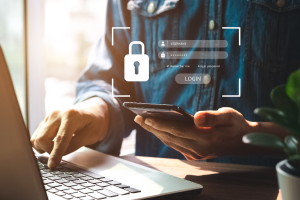
Here’s one way you can help reduce your chances of identity theft: remove your personal information from the internet.
And chances are, you have more personal information posted online than you think.
According to the U.S. Federal Trade Commission (FTC), consumers registered 1.4 million identity theft complaints in 2021, all part of a year where consumers reported losing $5.8 billion to fraud overall—a 70% increase over the year prior.
What fuels all this theft and fraud? Access to personal information.
Scammers and thieves can get a hold of personal information in several ways, such as through phishing attacks that lure you into handing it over, malware that steals it from your devices, by purchasing your information on dark web marketplaces, or as a result of information leaked in data breaches, just to name a few.
However, scammers and thieves have other resources to help them commit theft and fraud—data broker sites, places where personal information is posted online for practically anyone to see. Which makes removing your info from them so important, from both an identity and privacy standpoint.
Think of data broker sites as huge repositories of personal information. Search your name and address online and you’ll see. You’ll likely find dozens of sites that turn up information about you, some of which offer a few pieces for free and others that offer far more information for a price.
Data brokers collect and then aggregate personal information from several sources, including:
Data brokers also buy personal information from other data brokers. As a result, some data brokers have thousands of pieces of data for billions of individuals worldwide.
What could that look like? A broker may know how much you paid for your home, your education level, where you’ve lived over the years and who your lived with, your driving record, and possibly your political leanings. A broker may also know your favorite flavor of ice cream and your preferred over-the-counter allergy medicine thanks to information from loyalty cards. Further, they may also have health-related information from fitness apps. The amount of personal information can run that broadly, and that deeply.
With information at this potential level of detail, it’s no wonder that data brokers rake in an estimated at $200 billion U.S. dollars worldwide every year.
On the legitimate side, it’s used by advertisers to create targeted ad campaigns. With information sold by data brokers, they can generate lists based on highly specific criteria, such as shopping histories, personal interests, and even political leanings as mentioned above. Likely without you being aware of it—and likely with no way to contest that information if it’s incorrect.
Other legitimate uses include using these sites for background checks. Law enforcement, reporters, and employers will use data brokers as a starting point for research because the leg work has largely been done for them. Namely, data brokers have aggregated a person’s information already, which is an otherwise time-consuming process.
If this seems a little shady, it’s still legal. As of now, the U.S. has no federal laws that regulate data brokers or require data them to remove personal information if requested. A few states, such as Nevada, Vermont, and California, have legislation in place aimed at protecting consumers. Meanwhile, the General Data Protection Regulation (GDPR) in the European Union has stricter rules about what information can be collected and what can be done with it. Still, the data broker economy thrives.
On the darker side, scammers and thieves use personal information for identity theft and fraud. With enough personal information gathered from enough sources, they can create a high-fidelity profile of their victims. One that gives them enough information to open new accounts in their name.
So, from the standpoint of both privacy and identity, cleaning up your personal information online makes a great deal of sense.
Let’s review some ways you can remove your personal information from data brokers and other sources on the internet.
The process starts with finding the sites that have your information. From there, you can request to have it removed. Yet as mentioned above, there are dozens and dozens of these sites. Knowing where to start is a challenge in of itself, as is manually making the requests once you have identified the sites that post and sell information about you.
Our Personal Data Cleanup can do the work for you. Personal Data Cleanup scans some of the riskiest data broker sites and shows you which ones are selling your personal info. It also provides guidance on how you can remove your data from those sites and can even manage the removal for you depending on your plan. It also monitors those sites, so if your info gets posted again, you can request its removal again.
As of September 2022, Google accounts for just over 92% of search engine market share worldwide. Aside from being a search engine, Google offers a myriad of other services and applications, such as Gmail and Google Maps. While Google offers plenty of tools for productivity, travel, work, and play for free, they still come at a cost—the gathering and analysis of your personal information.
You can limit the data Google associates with you by removing your name from Google search results with a removal request. This will disable anyone online from getting any results if they search your name. (Note that this will not remove your information from the original sites and sources where it’s posted.) Moreover, Google collects all your browsing data continuously. You have the option to turn on “Auto Delete” in your privacy settings to ensure that the data is deleted regularly and help limit the amount of time your sensitive data stays vulnerable.
You can also occasionally delete your cookies or use your browser in incognito mode to prevent websites from being tracked back to you. Go to your Google Chrome settings to clear your browser and cookie history.
As discussed above, data brokers can collect information from public social media profiles. You can minimize your presence on social media to the bare minimum. Make a list of the ones you use or have used in the past. If there are old accounts that you no longer use or websites that have gone by the wayside like Myspace or Tumblr, you may want to deactivate them or consider deleting them entirely.
For social media platforms that you still may use regularly, like Facebook and Instagram, consider adjusting your privacy settings to ensure that your personal information on these social media platforms is the bare minimum. For example, on Facebook you can lock your profile, while on Instagram you can stay private.
If you’ve ever published articles, written blogs, or created any content online, it might be a good time to consider taking it down if it is no longer serving a purpose. Depending on what you’ve posted, you may have shared personal details about your life. Additionally, you might be mentioned by other people in various social media posts, articles, or blogs. It is worth reaching out to these people to request them to take down posts with sensitive information.
Social media and online articles that host your personal information are often used when businesses or hackers are doing “internet scrapes” to find better ways to use your targeted information. Asking your friends or third-party sites to remove that information can help protect your privacy.
Another way you can tidy up your digital footprint online involves deleting all the unnecessary phone apps that you no longer need or use. Even when apps are not open or in use, they may be able to track personal information such as your real-time location and even your payment details if you have a paid subscription to the app.
Some apps even sell this data as it can be extremely advantageous to other companies, which they use to target certain consumer segments and profiles for advertising. Try to share as little information with apps as possible if you’re looking to minimize your online footprint, and provide them access to your photos, contacts, and location only on as-needed basis and only when the app is in use. Your phone’s app and location services settings will give you the tools to do it.
In addition to the steps above, comprehensive online protection software can keep you more private and minimize your risk of cybercrime. It can include:
So while it may seem like all this rampant collecting and selling of personal information is out of your hands, there’s plenty you can do to take control. With the steps outlined above and strong online protection software at your back, you can keep your personal information more private and secure.
The post 5 Steps to Removing Your Personal Information From the Internet appeared first on McAfee Blog.

Whether using the internet for play or work, you want to spend your time online enjoying the peace of mind that comes with having a secure network.
You don’t want to contend with someone taking your personal data — whether it’s credit card information, passwords, or bank account details — via malware or a data breach on your Android, Windows, or Apple iOS device.
Fortunately, with some sensible precautions and simple steps, you can use your connected devices productively without worrying about cybercriminals and malicious software. This article explains how to stop hackers from getting access to your sensitive data.
You can take steps to protect your different computing and mobile devices and operating systems. These steps can be divided into technological solutions and the right awareness and information to provide a comforting measure of self-protection.
It’s like learning karate for self-defense, giving you confidence as you negotiate the wider world (and hoping that you never have to use it).
When it comes to identity protection software, McAfee provides a proven solution with our identity protection and privacy services. The protection includes alerts if your sensitive information is found on the dark web (up to 10 months sooner than other providers), personal data cleanup from sites gathering and selling your information, and an unlimited virtual public network (VPN) service that protects your privacy as you use public Wi-Fi networks.
You’ll also get up to $1 million in identity theft coverage and hands-on restoration support to help you reclaim your identity.
Simple, obvious passwords and passcodes (like your street address, your birthday, your kids’ or pets’ names, or “1234” or “abcd”) are easy for cybercriminals to crack, giving them unwanted access to your private data.
The stronger your password, the better your protection. Some best password practices include:
It’s important not to be a standing target. Just as you should use different passwords for everything, you should regularly change your passwords. You should do this a few times a year (although some cyber experts say this might not be necessary if you have a long and very complicated password).
If you have a number of passwords that you update often, it might be worth getting a password manager like McAfee True Key to keep track of them. Not only will you not be faced with remembering all your different passwords or writing them down (also a no-no), but it can also help you create and store unique passwords.
The software uses the strongest encryption algorithms available to protect your passwords, scrambling them so no one else can access them. It’ll also suggest new passwords and automatically log you into your online accounts with just one master password.
Another important line of defense is multi-factor authentication (sometimes known as two-factor authentication). This system uses a password and a second piece of verification — often an SMS message sent to your Android device or iPhone — to authenticate your identity.
This provides hard-to-beat protection even if a hacker has your password. Besides receiving SMS codes, there are also code-generating apps and physical security keys.
Thinking before you click on an email or text is a very important defense against phishing scams. Your bank won’t send you an email or text notifying you that there’s been suspicious activity on your account.
Does getting a large refund from your phone company sound too good to be true? It is. Similarly, the Internal Revenue Service (IRS) won’t text to tell you that you owe them money, and princes aren’t going to give you a fortune out of the blue.
Internet users beware: If you’re not absolutely certain that the text message you received is from a legitimate and trusted source, delete it. You can always contact the business or person directly to confirm that the message is legit.
Any operating system or app you use is open to malicious cyberattacks. This is why you should keep all your software up to date with the latest versions. Software developers are continually fixing holes in their products and offering cybersecurity patches to make them as safe and hacker-proof as possible.
Make sure your software, firmware, and security settings are up to date on your home’s Wi-Fi router, as well. You can often change your settings to allow for automatic updates.
Sure, who doesn’t like to go to a cafe, library, or hotel lobby to use the free Wi-Fi? But security is often weak in these public networks. If you open your online banking account or access personal information, you may unwittingly be giving a personal invitation to eavesdropping cybercriminals.
This is where the bank-grade level of protection of McAfee Secure VPN comes in, which automatically turns on when you need it and keeps you safe on public Wi-Fi networks.
Even if your device does get hacked, you can protect vital information on your Windows or macOS system with an encryption program like BitLocker or FileVault. You can protect any hard drive you use, including portable ones and USB keys.
It’s also a good idea to only shop at encrypted websites marked with the prefix “HTTPS” in their URLs.
One of the best ways to surf the web in comfort while keeping hackers at bay is with the comprehensive solutions provided by McAfee Total Protection.
Your protection includes proactive measures (meaning we’ll guide you to the best choices for prevention), early detection, and expert identity theft support.
This means you’ll get identity monitoring, up to $1 million in identity theft coverage, lost wallet protection, premium antivirus software, a secure VPN, and personal data removal. In particular, our Personal Data Cleanup service will help find and remove your personal information from data broker websites and people search sites.
With McAfee, you don’t have to be afraid of hackers. Let us deal with them.
The post How to Stay One Step Ahead of Hackers appeared first on McAfee Blog.
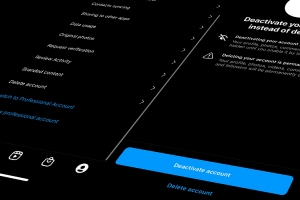
Your digital footprint grows with every internet account you make. While your old Tumblr account may be fun for reminiscing, dormant accounts are actually one of the most significant sources of user data on the internet. These accounts can be used by data brokers or third parties to access your personal information.
To improve your data security, it’s good practice to remove public-facing information by deleting unused accounts. Simply put, having less personal data stored on the internet reduces the risk of theft and/or non-consensual data usage.
Deleting, canceling, unsubscribing, or removing your account can be a long process, depending on the service. This article will walk you through the simplest ways to delete unwanted accounts from various social media platforms.
Deleting unwanted accounts protects your information and prevents the monetization of your data. Your internet accounts often hold personal information like your name, age, email, or home address. What’s more alarming is that some platforms may even have credit card details, phone numbers, and bank account information.
When left unattended, internet accounts become vulnerable to being suspended or taken over by the platform. This means that if your accounts are left inactive for too long, you might be handing some or all of your data over to the tech platform.
For example, even if you believe an old Google account doesn’t have any sensitive information stored, it may be linked to other platforms you use (like Amazon or Google services like Gmail and Google Play). This exposes all of these accounts to several data privacy vulnerabilities.
Moreover, a recent survey found that 70% of surveyed adults admitted using the same password for more than one service. People who don’t use password managers or reuse passwords are at a greater security risk than others, as multiple accounts can become compromised at once. Whether the platform is now out of service or you are cutting down on your app usage, deleting dormant accounts will minimize security threats and safeguard your data.
Every platform has a different process for deleting accounts: Some take only a few clicks to complete and others are a little longer. Companies usually don’t want a user to stop using their services, so account deletion pages are often hidden in a complex web of tabs that you have to navigate.
In addition, some subscription services might require that you send an email to customer support to close your account. You can go to justdelete.me, an online directory that lets you access direct links to account deletion pages of various web services.
Remember to download your personal information and data before pulling the plug on your account. Most platforms let you download your data before initiating a deletion request, which saves you from losing important details and files. It is also important to check whether your Google account is used for your YouTube channel or connected to other online accounts.
To help you get rid of accounts you no longer use, we’ve broken down deleting accounts from some of the most popular social networks. The steps described below are for a desktop browser and may not apply to Android or iOS devices (unless specified).
Facebook’s user privacy policy enables it to store a large amount of user information, including personal messages, posts, search history, name, age, birthdate, and even metadata from posted photos and videos.
Follow these simple steps to delete your Facebook account:
LinkedIn collects information on users and uses it for targeted advertising. As a result, it amasses quite a lot of your data, from professional details to personal preferences and even your online behavior trail.
Follow these simple steps from your desktop to delete your account:
It’s simple to delete your Twitter account, but you’ll have to wait 30 days for your data and tweets to clear. To delete your account, you first need to deactivate it.
Once you’ve decided to delete your account from the micro-blogging site, follow these steps from your desktop:
Remember to revoke third-party access to your Twitter account to avoid having your account reactivated in the 30 days following deactivation.
Since Facebook and Instagram are both owned by Meta, they share a lot of data for targeted advertising. You can adjust the privacy settings of your Instagram account from the mobile app, but you will need to log in from a web browser like Chrome to delete your account.
To delete your Instagram account:
Your information and data will be permanently deleted after 30 days and you won’t be able to retrieve it. However, completing a deletion process may take up to 90 days.
Tumblr has a fairly simple process to delete your account:
Follow these steps to delete your account from the popular picture-sharing platform:
Pinterest servers continue to store your data after deletion, but your information won’t be visible to other users.
There are different steps to deleting your email account depending on which email service you use. Backing up email data usually takes more time because of the sheer volume of data a mail account can hold.
Complete the following steps to delete your Google account:
Here’s what you need to do to delete your Yahoo email account:
Deleting your Yahoo account also deletes the linked information from Yahoo’s other services.
Follow these steps to delete your Microsoft account on Outlook 2010, 2013, or 2016:
Leaving old information scattered across the internet makes you susceptible to identity theft. There are multiple ways to keep your identity and data secure online, including McAfee’s Total Protection plan.
Total Protection lets you choose from multiple affordable subscription models that provide comprehensive security against identity theft and potential data breaches and offers web protection and several related benefits. In addition, having access to 24/7 online security experts and a 30-day money-back guarantee make the Total Protection plan an easy, reliable, and safe choice. You can also have peace of mind with McAfee’s Personal Data Cleanup feature where our teams will work to find your personal information online and assist in removing it.
The post How to Delete Old Accounts Containing Personal Information appeared first on McAfee Blog.
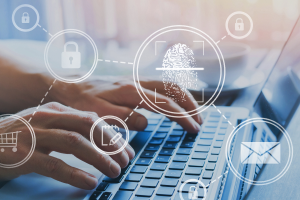
Private tech companies gather tremendous amounts of user data. These companies can afford to let you use social media platforms free of charge because it’s paid for by your data, attention, and time.
Big tech derives most of its profits by selling your attention to advertisers — a well-known business model. Various documentaries (like Netflix’s “The Social Dilemma”) have attempted to get to the bottom of the complex algorithms that big tech companies employ to mine and analyze user data for the benefit of third-party advertisers.
This article will help you better understand what information is being collected by tech companies, how it’s being used, and how you can protect your privacy online.
Tech companies benefit from personal information by being able to provide personalized ads. When you click “yes” at the end of a terms and conditions agreement found on some web pages, you may be allowing the companies to collect the following data:
For someone unfamiliar with privacy issues, it is important to understand the extent of big tech’s tracking and data collection. Once these companies collect data, all this information can be supplied to third-party businesses or used to improve user experience.
The problem with this is that big tech has blurred the line between collecting customer data and violating user privacy in some cases. While tracking what content you interact with can be justified under the garb of personalizing the content you see, big tech platforms have been known to go too far. Prominent social networks like Facebook and LinkedIn have faced past legal trouble for accessing personal user data like private messages and saved photos.
The information you provide helps build an accurate character profile and turns it into knowledge that gives actionable insights to businesses. Private data usage can be classified into three cases: selling it to data brokers, using it to improve marketing, or enhancing customer experience.
Along with big data, another industry has seen rapid growth: data brokers. Data brokers buy, analyze, and package your data. Companies that collect large amounts of data on their users stand to profit from this service. Selling data to brokers is an important revenue stream for big tech companies.
Advertisers and businesses benefit from increased information on their consumers, creating a high demand for your information. The problem here is that companies like Facebook and Alphabet (Google’s parent company) have been known to mine massive amounts of user data for the sake of their advertisers.
Marketing can be highly personalized thanks to the availability of large amounts of consumer data. Tracking your response to marketing campaigns can help businesses alter or improve certain aspects of their campaign to drive better results.
The problem is that most AI-based algorithms are incapable of assessing when they should stop collecting or using your information. After a point, users run the risk of being constantly subjected to intrusive ads and other unconsented marketing campaigns that pop up frequently.
Analyzing consumer behavior through reviews, feedback, and recommendations can help improve customer experience. Businesses have access to various facets of data that can be analyzed to show them how to meet consumer demands. This could help improve any part of a consumer’s interaction with the company, from designing special offers and discounts to improving customer relationships.
For most social media platforms, the goal is to curate a personalized feed that appeals to the users and allows them to spend more time on the app. When left unmonitored, the powerful algorithms behind these social media platforms can repeatedly subject you to the same kind of content from different creators.
Here are the big tech companies that collect and mine the most user data.
Users need a comprehensive data privacy solution to tackle the rampant, large-scale data mining carried out by big tech platforms. While targeted advertisements and easily found items are beneficial, many of these companies collect and mine user data through several channels simultaneously, exploiting them in many different ways.
It’s important to make sure your personal information is protected. Protection solutions like McAfee’s Personal Data Cleanup feature can help. With this feature, our teams scour the web for traces of your personal information and assist in getting it removed to enhance your online privacy.
McAfee’s Total Protection provides antivirus software for all of your digital devices and a secure VPN connection to avoid exposure to malicious third parties while browsing the internet. Our identity monitoring and personal data removal solutions further remove gaps in your devices’ security systems.
With our airtight data protection and custom guidance (complete with a protection score for each platform and tips to keep you safer), you can be sure that your internet identity is protected.
The post What Personal Data Do Companies Track? appeared first on McAfee Blog.
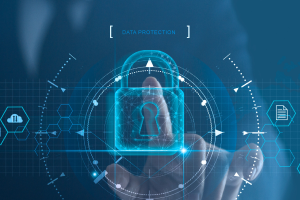
Our personal and professional lives are becoming increasingly intertwined with the online world. Regular internet usage has made us all prone to cyber-security risks. You leave a digital footprint every time you use the internet, which is a trace of all your online activities.
When you create new accounts or subscribe to different websites, you give them explicit (or implicit, through their family of apps or subsidiary websites) access to your personal and credit card information. In other cases, websites might track basic information without your knowledge, such as your location and search history.
There is an industry of data brokers specifically dedicated to keeping track of user data, packaging it, and supplying it to tech companies who use it to run targeted ads and enhance on-platform user experience. Given the widespread use of the internet and exponential improvements in technology, data has become a valuable commodity — creating a need for the sale and purchase of user data.
This article discusses how data brokers sell your personal information and how you can minimize risk.
Data brokers are companies that aggregate user information from various sources on the internet. They collect, collate, package, and sometimes even analyze this data to create a holistic and coherent version of you online. This data is then supplied to tech companies to fuel their third-party advertising-centered business models.
Companies interested in buying data include but are not limited to:
These companies and social media platforms use your data to better understand target demographics and the content with which they interact. While the practice isn’t unethical in and of itself (personalizing user experiences and creating more convenient UIs are usually cited as the primary reasons for it), it does make your data vulnerable to malicious attacks targeted toward big-tech servers.
Most of your online activities are related. Devices like your phone, laptop, tablets, and even fitness watches are linked to each other. Moreover, you might use one email ID for various accounts and subscriptions. This online interconnectedness makes it easier for data brokers to create a cohesive user profile.
Mobile phone apps are the most common way for data brokerage firms to collect your data. You might have countless apps for various purposes, such as financial transactions, health and fitness, or social media.
A number of these apps usually fall under the umbrella of the same or subsidiary family of apps, all of which work toward collecting and supplying data to big tech platforms. Programs like Google’s AdSense make it easier for developers to monetize their apps in exchange for the user information they collect.
Data brokers also collect data points like your home address, full name, Social Security number, phone number, and date of birth. They have automated scraping tools to quickly collect relevant information from public profiles.[Text Wrapping Break]
Lastly, data brokers can gather data from other third parties that track your cookies or even place trackers or cookies on your browsers. Cookies are small data files that track your online activities when visiting different websites. They track your IP address and browsing history, which third parties can exploit. Cookies are also the reason you see personalized ads and products.
Data brokers collate your private information into one package and sell it to “people search” websites like Spokeo or TruePeopleSearch. You or a tech business can use these websites to search for people and get extensive consumer data. People search sites also contain public records like voter registration information, marriage records, and birth certificates. This data is used for consumer research and large-scale data analysis.
Next, marketing and sales firms are some of data brokers’ biggest clients. These companies purchase massive data sets from data brokers to research your data profile. They have advanced algorithms to segregate users into various consumer groups and target you specifically. Their predictive algorithms can suggest personalized ads and products to generate higher lead generation and conversation percentages for their clients.
We tend to accept the terms and conditions that various apps ask us to accept without thinking twice or reading the fine print. You probably cannot proceed without letting the app track certain data or giving your personal information. To a certain extent, we trade some of our privacy for convenience. This becomes public information, and apps and data brokers collect, track, and use our data however they please while still complying with the law.
There is no comprehensive privacy law in the U.S. on a federal level. This allows data brokers to collect personal information and condense it into marketing insights. While not all methods of gathering private data are legal, it is difficult to track the activities of data brokers online (especially on the dark web). As technology advances, there are also easier ways to harvest and exploit data.
Vermont and California have already enacted laws to regulate the data brokerage industry. In 2018, Vermont passed the country’s first data broker legislation. This requires data brokers to register annually with the Secretary of State and provide information about their data collection activities, opt-out policies, purchaser credentialing practices, and data breaches.
California has passed similar laws to make data brokering a more transparent industry. For risk mitigation of data brokerage, the Federal Trade Commission (FTC) has published reports and provided recommendations to Congress to reduce the engagement of data broker firms. Giving individuals the right to opt-out of the sale of their personal data is a step toward a more rigorous law regarding data privacy.
Some data brokers let you remove your information from their websites. There are also extensive guides available online that list the method by which you can opt-out of some of the biggest data brokering firms. For example, a guide by Griffin Boyce, the systems administrator at Harvard University’s Berkman Klein Center for Internet and Society, provides detailed information on how to opt-out of a long list of data broker companies.
Acxiom, LLC is one of the largest data brokering firms and has collected data for approximately 68% of people who have an online presence. You can opt-out of their data collection either through their website or by calling them directly.
Epsilon Data Management is another big player in the data broker industry that operates as a marketing service and marketing analytics company. You can opt-out of their website through various methods such as by email, phone, and mail. Credit rating agencies like Experian and Equifax are also notorious for collecting your data. Similarly, you can opt-out through their websites or by calling them.
McAfee is a pioneer in providing online and offline data protection to its customers. We offer numerous cybersecurity services for keeping your information private and secure.
With regard to data brokers, we enable users to do a personal data clean-up. Cleaning up your personal data online may be a difficult task, as it requires you to reach out to multiple data brokers and opt out. Instead, sign up for McAfee’s Personal Data Cleanup feature to do a convenient and thorough personal data clean-up. We will search for traces of your personal data and assist in getting it removed.
The post How Data Brokers Sell Your Identity appeared first on McAfee Blog.